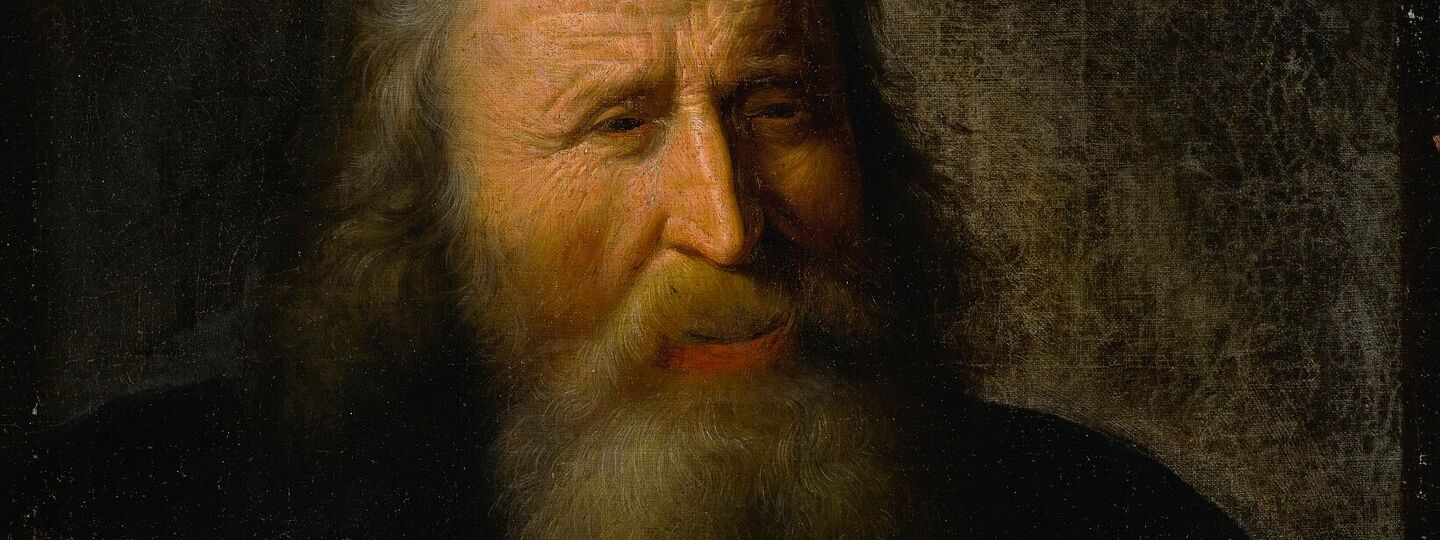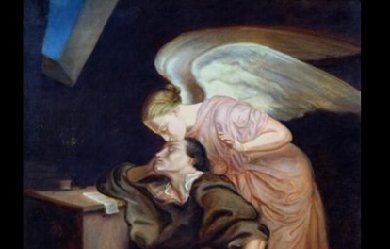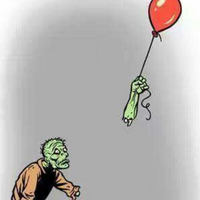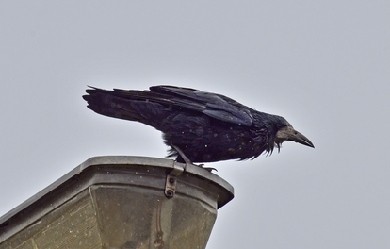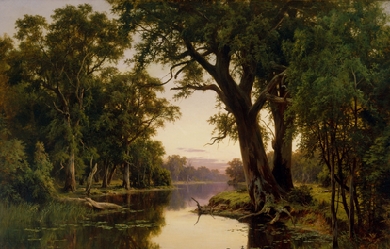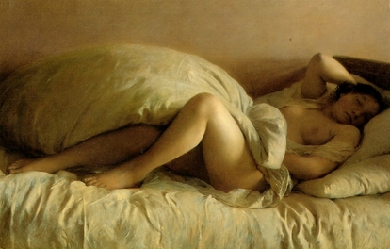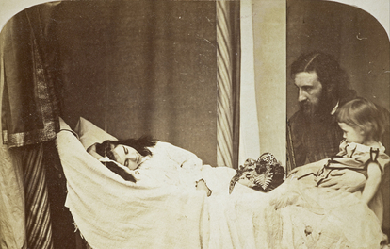
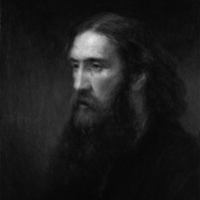
George MacDonald (10 December 1824– 18 September 1905) was a Scottish author, poet, and Christian minister. He was a pioneering figure in the field of fantasy literature and the mentor of fellow writer Lewis Carroll. His writings have been cited as a major literary influence by many notable authors including W. H. Auden, C. S. Lewis, J. R. R. Tolkien, Walter de la Mare, E. Nesbit and Madeleine L’Engle. C. S. Lewis wrote that he regarded MacDonald as his “master”: “Picking up a copy of Phantastes one day at a train-station bookstall, I began to read. A few hours later,” said Lewis, “I knew that I had crossed a great frontier.” G. K. Chesterton cited The Princess and the Goblin as a book that had “made a difference to my whole existence”.

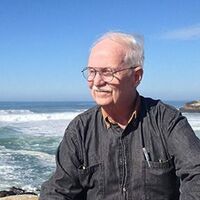
POETRY: * Influenced by the passion and vibrant imagery created by the words of Khalil Gibran, Pablo Neruda, Grace Chacon Leon, Cory Garcia, Nelson Reyes, and J Ann Crowder. * Author of seven books; "Wings of Inspiration," "Rhymes of the Joke Machine," "The Air Almighty," "Martin's World," "Secrets of the Wind," "Mother of Life." and "Poet's Island," (published by Cyberwit.net), Published works in Mature Years, Alive Now, Torrid Literature Journal, Universal Oneness Anthology, Taj Mahal Review, Eastern Sea Bards Poetry, Inkling Magazine, Page & Spine, Charles Carter Anthologies, Purpose Magazine, Terror House Magazine, Brief Wilderness, Cowboy Poetry Press, The Voices Project, Aberration Labyrinth, Long Shot Books, Academy of the Heart & Mind, Blue Lake Review, Gival Press, The Higgs Weldon, Funny In Five Hundred, Verse-Virtual, Wilderness House Literary Review, White Liquor Mag, Ygdrasil Literary Journal, Poetica, Green Silk Journal, Madswirl, Lyrical Passion Poetry E-Zine, Poet's Pen, Storyteller, FreeXpression, Poets' Espresso, Long Story Short, Oddball Magazine, Asinine Poetry, Write On!!, American Legion On-Line, Pegasus Review, Prayerworks, Stepping Stones, Love's Chance, Poet's Haven, Jerry Jazz Musician, Fullosia Press, The Sheltered Poet, The Belt and Beyond, Blue Minaret, and Ego Phobia. * Wrote two chapbooks entitled "In Reverence to Life" and "A Sage's Diary," (published by In His Steps Publishing). Won two poetry awards (Faith and Hope) and appeared in many anthology books. His poetry also has been narrated and set to music by Narad. MUSIC: * Playing, writing, and arranging music for most of life. * Studied music at Westlake College of Music in Hollywood, California in 1958 and majored in piano. * Played in the 82nd Army Band in Stuttgard, Germany from 1962 until 1964. * Played in the Jimmy Dorsey Band in 1965. * Played in a band in Bergen, Norway in 1966. * Composed score for Dr. Ira Cochin's Rally George in Valley Forge children's play. * Playing the organ at John Wesley Covenant Church in Wind Gap, PA since 1993. THE REST OF LIFE: Born in Ashtabula, Ohio, and moved to New York City shortly thereafter. Got married in 1984 and had a wonderful daughter in 1985. Can be found at his home in Bangor, PA at his keyboard, or in front of a yellow legal pad, pen in hand...

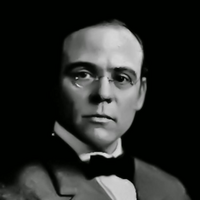
Edgar Lee Masters (August 23, 1868 – March 5, 1950) was an American attorney, poet, biographer, and dramatist born in Garnett, Kansas. He is the author of Spoon River Anthology, The New Star Chamber and Other Essays, Songs and Satires, The Great Valley, The Serpent in the Wilderness An Obscure Tale, The Spleen, Mark Twain: A Portrait, Lincoln: The Man, and Illinois Poems. In all, Masters published twelve plays, twenty-one books of poetry, six novels and six biographies, including those of Abraham Lincoln, Mark Twain, Vachel Lindsay, and Walt Whitman.


Donal Mahoney, a native of Chicago, lives in St. Louis, Missouri. His fiction and poetry have appeared in various publications, including The Wisconsin Review, The Kansas Quarterly, The South Carolina Review, The Christian Science Monitor, The Beloit Poetry Journal, Commonweal, The Galway Review (Ireland), Public Republic (Bulgaria), Revival (Ireland), The Istanbul Literary Review (Turkey) and other magazines. Some of his earliest work can be found at http://booksonblog12.blogspot.com; some newer work at http://eyeonlifemag.com/the-poetry-locksmith/donal-mahoney-poet.html#sthash.OSYzpgmQ.dpbs=
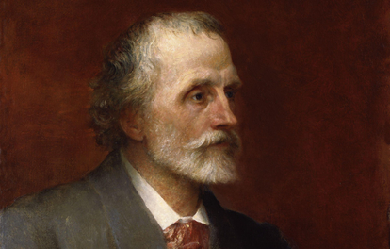

George Meredith, OM (12 February 1828 – 18 May 1909) was an English novelist and poet of the Victorian era. Meredith was born in Portsmouth, England, a son and grandson of naval outfitters. His mother died when he was five. At the age of 14 he was sent to a Moravian School in Neuwied, Germany, where he remained for two years. He read law and was articled as a solicitor, but abandoned that profession for journalism and poetry. He collaborated with Edward Gryffydh Peacock, son of Thomas Love Peacock in publishing a privately circulated literary magazine, the Monthly Observer. He married Edward Peacock’s widowed sister Mary Ellen Nicolls in 1849 when he was twenty-one years old and she was twenty-eight.
#English #Victorians #XIXCentury
Environmental scientist and maybe a poet. I suspect like most people on here I have an urge to write. I've been much buoyed by kind words and likes over the years on this site, despite been in the weeds and not writing for the past few. Now I have my head above the water I can hear my muse again. Thank you kindly for stopping by. I love reading work by others at all stages of their writing journey. Bon Voyage!


Herman Melville (August 1, 1819– September 28, 1891) was an American novelist, short story writer, and poet of the American Renaissance period best known for Typee (1846), a romantic account of his experiences in Polynesian life, and his whaling novel Moby-Dick (1851). His work was almost forgotten during his last thirty years. His writing draws on his experience at sea as a common sailor, exploration of literature and philosophy, and engagement in the contradictions of American society in a period of rapid change. He developed a complex, baroque style: the vocabulary is rich and original, a strong sense of rhythm infuses the elaborate sentences, the imagery is often mystical or ironic, and the abundance of allusion extends to Scripture, myth, philosophy, literature, and the visual arts.

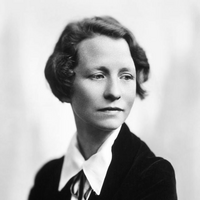
Edna St. Vincent Millay (February 22, 1892 – October 19, 1950) was an American poet and playwright. She received the Pulitzer Prize for Poetry in 1923, the third woman to win the award for poetry, and was also known for her feminist activism. She used the pseudonym Nancy Boyd for her prose work. The poet Richard Wilbur asserted, "She wrote some of the best sonnets of the century."
#Americans #PulitzerPrize #Women #XXCentury
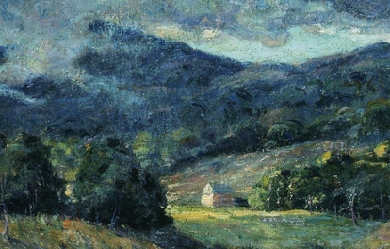
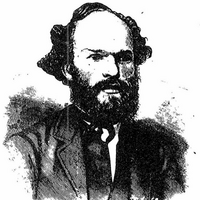
James McIntyre (baptised 25 May 1828– 31 March 1906), called The Cheese Poet, was a Canadian poet. McIntyre was born in Forres, Scotland and came to Canada in 1841 at the age of 14. He worked as a hired hand to begin with, performing pioneer chores that formed the basis of a number of his works. Later, he settled in St. Catharines, Ontario, where he dealt in furniture. There he married and had a daughter and son. He later moved to Ingersoll, Ontario, then a town of 5,000 on the banks of the Thames in Oxford County, the heart of Canadian dairy country at the time. He opened a furniture factory on the river as well as a store which sold furniture, along with such items as pianos and coffins. He was well loved in the community, from which he often received aid in hard times, due in part to his poesy and oratorical skills—he was called on to speak at every kind of social gathering in Ingersoll. The region seems to have inspired him, and it was in celebration of the proud history of Canada, the natural beauty and industry of the region, and especially (as noted above) its cheese, that the majority of his oeuvre was written. The ancient poets ne’er did dream That Canada was land of cream, They ne’er imagined it could flow In this cold land of ice and snow, Where everything did solid freeze They ne’er hoped or looked for cheese. from “Oxford Cheese Ode” [1] McIntyre was uninhibited by minor shortcomings—such as his lack of literary skills. The Toronto Globe ran his pieces as comic relief, and the New York Tribune expressed amusement, but their mockery did not dampen his enthusiasm. He is assumed to have continued writing until his death, in 1906. He published two volumes of poetry: Musings on the Canadian Thames (1884); Poems of James McIntyre (1889). McIntyre was forgotten after his death for a number of years, until his work was rediscovered and reprinted by William Arthur Deacon—literary editor of the Toronto Mail and Empire and its successor the Globe and Mail—in his book The Four Jameses (1927). In recent years a volume of his work, Oh! Queen of Cheese: Selections from James McIntyre, the Cheese Poet (ed. Roy A Abramson; Toronto: Cherry Tree, 1979) collected his poems together with a variety of cheese recipes and anecdotes. However, the greatest boost to his fame probably came from a number of his poems being anthologized in the collection Very Bad Poetry, edited by Ross and Kathryn Petras (Vintage, 1997). This included his masterpiece and possibly best-known poem, "Ode on the Mammoth Cheese Weighing Over 7,000 Pounds," written about an actual cheese produced in Ingersoll in 1866 and sent to exhibitions in Toronto, New York, and Britain: We have seen thee, Queen of Cheese, Lying quietly at your ease, Gently fanned by evening breeze; Thy fair form no flies dare seize. All gaily dressed, soon you’ll go To the provincial show, To be admired by many a beau In the city of Toronto. from “Ode on the Mammoth Cheese” [2] An annual poetry contest is held in Ingersoll, Ontario, to honour McIntyre. The contest is sponsored by The Ingersoll Times and the Corporation of the Town of Ingersoll, and includes a cheese-themed poetry competition. References Wikipedia—https://en.wikipedia.org/wiki/James_McIntyre_(poet)
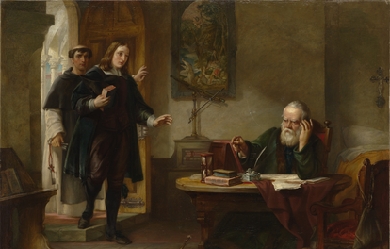
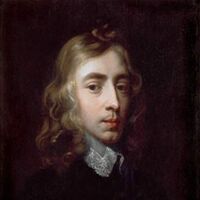
John Milton (9 December 1608 – 8 November 1674) was an English poet, polemicist, a scholarly man of letters, and a civil servant for the Commonwealth (republic) of England under Oliver Cromwell. He wrote at a time of religious flux and political upheaval, and is best known for his epic poem Paradise Lost. Milton's poetry and prose reflect deep personal convictions, a passion for freedom and self determination, and the urgent issues and political turbulence of his day. Writing in English, Latin, and Italian, he achieved international renown within his lifetime, and his celebrated Areopagitica, (written in condemnation of pre-publication censorship) is among history’s most influential and impassioned defenses of free speech and freedom of the press.

I'm a teenage experimental poet, song writer, and author. I come from a good home but a not so good past. I explain myself through poetry and writing, because there is no other way to described me. I'm just awkward. I have severe depression and anxiety, along with other problems and struggles, and writing helps ease it all. I have love and passion for my work, and I plan on becoming a published author in the future. I try to use all senses of perspective in my writing; I wish to help change the world one poem at a time. ***PLEASE DO NOT COPYRIGHT WHAT IS PUBLISHED ON THIS BLOG. ONLY SHARE UNDER MY NAME AND ESTABLISH CORRECT OWNERSHIP. I CLAIM THESE WORKS AS MY OWN AND UNDER NO CIRCUMSTANCES SHOULD I BE BLAMED FOR FRAUD, OR HAVE PERSONS DENY ME MY RIGHTS BECAUSE OF MY AGE AND SOCIAL STANDING. MY WRITINGS, MY NAME, MY STORY, MY RIGHT. PLEASE RESPECT MY OWNERSHIP AND RESPECT MY WISHES AS A YOUNG ADULT WRITER.*** ~THANK YOU~
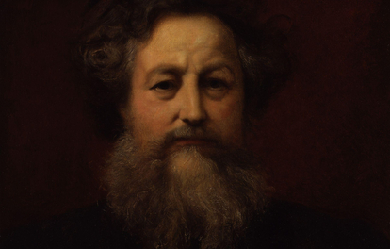
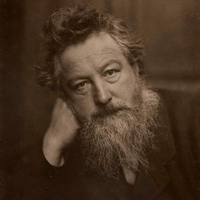
William Morris (24 March 1834 – 3 October 1896) was an English textile designer, poet, novelist, translator, and socialist activist. Associated with the British Arts and Crafts Movement, he was a major contributor to the revival of traditional British textile arts and methods of production. His literary contributions helped to establish the modern fantasy genre, while he played a significant role in propagating the early socialist movement in Britain.


Charles Mackay (27 March 1814– 24 December 1889) was a Scottish poet, journalist, author, anthologist, novelist, and songwriter, remembered mainly for his book Extraordinary Popular Delusions and the Madness of Crowds. He was born in Perth. His father, George Mackay, was a bombardier in the Royal Artillery, and his mother Amelia Cargill died shortly after his birth. His birthdate was 26 March 1812, although he always gave it as 27 March 1814.
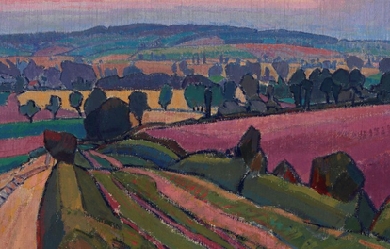
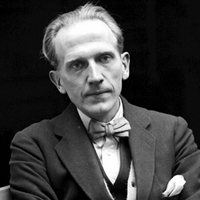
Alan Alexander “A. A.” Milne (/ˈmɪln/; 18 January 1882– 31 January 1956) was an English author, best known for his books about the teddy bear Winnie-the-Pooh and for various poems. Milne was a noted writer, primarily as a playwright, before the huge success of Pooh overshadowed all his previous work. Milne served in both World Wars, joining the British Army in World War I, and was a captain of the British Home Guard in World War II. Biography Alan Alexander Milne was born in Kilburn, London to parents John Vince Milne, who was Scottish, and Sarah Marie Milne (née Heginbotham) and grew up at Henley House School, 6/7 Mortimer Road (now Crescent), Kilburn, a small public school run by his father. One of his teachers was H. G. Wells, who taught there in 1889–90. Milne attended Westminster School and Trinity College, Cambridge where he studied on a mathematics scholarship, graduating with a B.A. in Mathematics in 1903. While there, he edited and wrote for Granta, a student magazine. He collaborated with his brother Kenneth and their articles appeared over the initials AKM. Milne’s work came to the attention of the leading British humour magazine Punch, where Milne was to become a contributor and later an assistant editor. Milne played for the amateur English cricket team the Allahakbarries alongside authors J. M. Barrie and Arthur Conan Doyle. Milne joined the British Army in World War I and served as an officer in the Royal Warwickshire Regiment and later, after a debilitating illness, the Royal Corps of Signals. He was commissioned into the 4th Battalion, Royal Warwickshire Regiment on 17 February 1915 as a second lieutenant (on probation). His commission was confirmed on 20 December 1915. On 7 July 1916, he was injured while serving in the Battle of the Somme and invalided back to England. Having recuperated, he was recruited into Military Intelligence to write propaganda articles for MI 7b between 1916 and 1918. He was discharged on 14 February 1919, and settled in Mallord Street, Chelsea. He relinquished his commission on 19 February 1920, retaining the rank of lieutenant. After the war, he wrote a denunciation of war titled Peace with Honour (1934), which he retracted somewhat with 1940's War with Honour. During World War II, Milne was one of the most prominent critics of fellow English writer P. G. Wodehouse, who was captured at his country home in France by the Nazis and imprisoned for a year. Wodehouse made radio broadcasts about his internment, which were broadcast from Berlin. Although the light-hearted broadcasts made fun of the Germans, Milne accused Wodehouse of committing an act of near treason by cooperating with his country’s enemy. Wodehouse got some revenge on his former friend (e.g., in The Mating Season) by creating fatuous parodies of the Christopher Robin poems in some of his later stories, and claiming that Milne “was probably jealous of all other writers.... But I loved his stuff.” Milne married Dorothy “Daphne” de Sélincourt in 1913 and their son Christopher Robin Milne was born in 1920. In 1925, A. A. Milne bought a country home, Cotchford Farm, in Hartfield, East Sussex. During World War II, A. A. Milne was Captain of the British Home Guard in Hartfield & Forest Row, insisting on being plain “Mr. Milne” to the members of his platoon. He retired to the farm after a stroke and brain surgery in 1952 left him an invalid, and by August 1953 “he seemed very old and disenchanted”. Milne died in January 1956, aged 74. Literary career 1903 to 1925 After graduating from Cambridge in 1903, A. A. Milne contributed humorous verse and whimsical essays to Punch, joining the staff in 1906 and becoming an assistant editor. During this period he published 18 plays and 3 novels, including the murder mystery The Red House Mystery (1922). His son was born in August 1920 and in 1924 Milne produced a collection of children’s poems When We Were Very Young, which were illustrated by Punch staff cartoonist E. H. Shepard. A collection of short stories for children Gallery of Children, and other stories that became part of the Winnie-the-Pooh books, were first published in 1925. Milne was an early screenwriter for the nascent British film industry, writing four stories filmed in 1920 for the company Minerva Films (founded in 1920 by the actor Leslie Howard and his friend and story editor Adrian Brunel). These were The Bump, starring Aubrey Smith; Twice Two; Five Pound Reward; and Bookworms. Some of these films survive in the archives of the British Film Institute. Milne had met Howard when the actor starred in Milne’s play Mr Pim Passes By in London. Looking back on this period (in 1926), Milne observed that when he told his agent that he was going to write a detective story, he was told that what the country wanted from a “Punch humorist” was a humorous story; when two years later he said he was writing nursery rhymes, his agent and publisher were convinced he should write another detective story; and after another two years, he was being told that writing a detective story would be in the worst of taste given the demand for children’s books. He concluded that “the only excuse which I have yet discovered for writing anything is that I want to write it; and I should be as proud to be delivered of a Telephone Directory con amore as I should be ashamed to create a Blank Verse Tragedy at the bidding of others.” 1926 to 1928 Milne is most famous for his two Pooh books about a boy named Christopher Robin after his son, Christopher Robin Milne, and various characters inspired by his son’s stuffed animals, most notably the bear named Winnie-the-Pooh. Christopher Robin Milne’s stuffed bear, originally named “Edward”, was renamed “Winnie-the-Pooh” after a Canadian black bear named Winnie (after Winnipeg), which was used as a military mascot in World War I, and left to London Zoo during the war. “The pooh” comes from a swan called “Pooh”. E. H. Shepard illustrated the original Pooh books, using his own son’s teddy, Growler ("a magnificent bear"), as the model. The rest of Christopher Robin Milne’s toys, Piglet, Eeyore, Kanga, Roo and Tigger, were incorporated into A. A. Milne’s stories, and two more characters– Rabbit and Owl– were created by Milne’s imagination. Christopher Robin Milne’s own toys are now under glass in New York where 750,000 people visit them every year. The fictional Hundred Acre Wood of the Pooh stories derives from Five Hundred Acre Wood in Ashdown Forest in East Sussex, South East England, where the Pooh stories were set. Milne lived on the northern edge of the forest at Cotchford Farm, 51.090°N 0.107°E / 51.090; 0.107, and took his son walking there. E. H. Shepard drew on the landscapes of Ashdown Forest as inspiration for many of the illustrations he provided for the Pooh books. The adult Christopher Robin commented: “Pooh’s Forest and Ashdown Forest are identical”. Popular tourist locations at Ashdown Forest include: Galleon’s Lap, The Enchanted Place, the Heffalump Trap and Lone Pine, Eeyore’s Sad and Gloomy Place, and the wooden Pooh Bridge where Pooh and Piglet invented Poohsticks. Not yet known as Pooh, he made his first appearance in a poem, “Teddy Bear”, published in Punch magazine in February 1924. Pooh first appeared in the London Evening News on Christmas Eve, 1925, in a story called “The Wrong Sort Of Bees”. Winnie-the-Pooh was published in 1926, followed by The House at Pooh Corner in 1928. A second collection of nursery rhymes, Now We Are Six, was published in 1927. All three books were illustrated by E. H. Shepard. Milne also published four plays in this period. He also “gallantly stepped forward” to contribute a quarter of the costs of dramatising P. G. Wodehouse’s A Damsel in Distress. The World of Pooh won the Lewis Carroll Shelf Award in 1958. 1929 onwards The success of his children’s books was to become a source of considerable annoyance to Milne, whose self-avowed aim was to write whatever he pleased and who had, until then, found a ready audience for each change of direction: he had freed pre-war Punch from its ponderous facetiousness; he had made a considerable reputation as a playwright (like his idol J. M. Barrie) on both sides of the Atlantic; he had produced a witty piece of detective writing in The Red House Mystery (although this was severely criticised by Raymond Chandler for the implausibility of its plot). But once Milne had, in his own words, "said goodbye to all that in 70,000 words" (the approximate length of his four principal children’s books), he had no intention of producing any reworkings lacking in originality, given that one of the sources of inspiration, his son, was growing older. In his literary home, Punch, where the When We Were Very Young verses had first appeared, Methuen continued to publish whatever Milne wrote, including the long poem “The Norman Church” and an assembly of articles entitled Year In, Year Out (which Milne likened to a benefit night for the author). In 1930, Milne adapted Kenneth Grahame’s novel The Wind in the Willows for the stage as Toad of Toad Hall. The title was an implicit admission that such chapters as Chapter 7, “The Piper at the Gates of Dawn”, could not survive translation to the theatre. A special introduction written by Milne is included in some editions of Grahame’s novel. Legacy and commemoration The rights to A. A. Milne’s Pooh books were left to four beneficiaries: his family, the Royal Literary Fund, Westminster School and the Garrick Club. After Milne’s death in 1956, one week and six days after his 74th birthday, his widow sold her rights to the Pooh characters to Stephen Slesinger, whose widow sold the rights after Slesinger’s death to the Walt Disney Company, which has made many Pooh cartoon movies, a Disney Channel television show, as well as Pooh-related merchandise. In 2001, the other beneficiaries sold their interest in the estate to the Disney Corporation for $350m. Previously Disney had been paying twice-yearly royalties to these beneficiaries. The estate of E. H. Shepard also received a sum in the deal. The copyright on Pooh expires in 2026. In 2008, a collection of original illustrations featuring Winnie-the-Pooh and his animal friends sold for more than £1.2 million at auction in Sotheby’s, London. Forbes magazine ranked Winnie the Pooh the most valuable fictional character in 2002; Winnie the Pooh merchandising products alone had annual sales of more than $5.9 billion. In 2005, Winnie the Pooh generated $6 billion, a figure surpassed by only Mickey Mouse. A memorial plaque in Ashdown Forest, unveiled by Christopher Robin in 1979, commemorates the work of A. A. Milne and Shepard in creating the world of Pooh. Milne once wrote of Ashdown Forest: “In that enchanted place on the top of the forest a little boy and his bear will always be playing”. In 2003, Winnie the Pooh was listed at number 7 on the BBC’s survey The Big Read. In 2006, Winnie the Pooh received a star on the Hollywood Walk of Fame, marking the 80th birthday of Milne’s creation. That same year a UK poll saw Winnie the Pooh voted onto the list of icons of England. Several of Milne’s children’s poems were set to music by the composer Harold Fraser-Simson. His poems have been parodied many times, including with the books When We Were Rather Older and Now We Are Sixty. The 1963 film The King’s Breakfast was based on Milne’s poem of the same name. Religious views Milne did not speak out much on the subject of religion, although he used religious terms to explain his decision, while remaining a pacifist, to join the British Home Guard: “In fighting Hitler”, he wrote, “we are truly fighting the Devil, the Anti-Christ... Hitler was a crusader against God.” His best known comment on the subject was recalled on his death: The Old Testament is responsible for more atheism, agnosticism, disbelief—call it what you will—than any book ever written; it has emptied more churches than all the counter-attractions of cinema, motor bicycle and golf course. He also wrote the poem “Explained”: Works Novels * Lovers in London (1905. Some consider this more of a short story collection; Milne did not like it and considered The Day’s Play as his first book.) * Once on a Time (1917) * Mr. Pim (1921) (A novelisation of his play Mr. Pim Passes By (1919)) * The Red House Mystery (1922) * Two People (1931) (Inside jacket claims this is Milne’s first attempt at a novel.) * Four Days’ Wonder (1933) * Chloe Marr (1946) Non-fiction * Peace With Honour (1934) * It’s Too Late Now: The Autobiography of a Writer (1939) * War With Honour (1940) * War Aims Unlimited (1941) * Year In, Year Out (1952) (illustrated by E. H. Shepard) Punch articles * The Day’s Play (1910) * Once A Week (1914) * The Holiday Round (1912) * The Sunny Side (1921) * Those Were the Days (1929) [The four volumes above, compiled] Newspaper articles and book introductions * The Chronicles of Clovis by “Saki” (1911) [Introduction to] * Not That It Matters (1920) * By Way of Introduction (1929) Story collections for children * A Gallery of Children (1925) * Winnie-the-Pooh (1926) (illustrated by Ernest H. Shepard) * The House at Pooh Corner (1928) (illustrated by E. H. Shepard) * Short Stories Poetry collections for children * When We Were Very Young (1924) (illustrated by E. H. Shepard) * Now We Are Six (1927) (illustrated by E. H. Shepard) Story collections * The Secret and other stories (1929) * The Birthday Party (1948) * A Table Near the Band (1950) Poetry * For the Luncheon Interval [poems from Punch] * When We Were Very Young (1924) (illustrated by E. H. Shepard) * Now We Are Six (1927) (illustrated by E. H. Shepard) * Behind the Lines (1940) * The Norman Church (1948) * “The Knight Whose Armor Didn’t Squeak” Screenplays and plays * Wurzel-Flummery (1917) * Belinda (1918) * The Boy Comes Home (1918) * Make-Believe (1918) (children’s play) * The Camberley Triangle (1919) * Mr. Pim Passes By (1919) * The Red Feathers (1920) * The Bump (1920, Minerva Films), starring Aubrey Smith * Twice Two (1920, Minerva Films) * Five Pound Reward (1920, Minerva Films) * Bookworms (1920, Minerva Films) * The Great Broxopp (1921) * The Dover Road (1921) * The Lucky One (1922) * The Truth About Blayds (1922) * The Artist: A Duologue (1923) * Give Me Yesterday (1923) (a.k.a. Success in the UK) * Ariadne (1924) * The Man in the Bowler Hat: A Terribly Exciting Affair (1924) * To Have the Honour (1924) * Portrait of a Gentleman in Slippers (1926) * Success (1926) * Miss Marlow at Play (1927) * The Fourth Wall or The Perfect Alibi (1928) (later adapted for the film Birds of Prey (1930), directed by Basil Dean) * The Ivory Door (1929) * Toad of Toad Hall (1929) (adaptation of The Wind in the Willows) * Michael and Mary (1930) * Other People’s Lives (1933) (a.k.a. They Don’t Mean Any Harm) * Miss Elizabeth Bennet (1936) [based on Pride and Prejudice] * Sarah Simple (1937) * Gentleman Unknown (1938) * The General Takes Off His Helmet (1939) in The Queen’s Book of the Red Cross * The Ugly Duckling (1941) * Before the Flood (1951). References Wikipedia—https://en.wikipedia.org/wiki/A._A._Milne
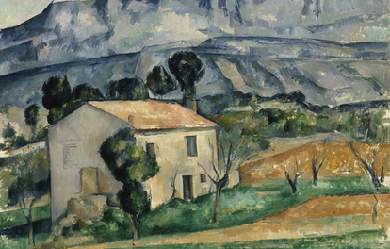
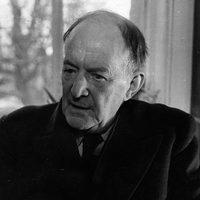
Walter John de la Mare (25 April 1873 – 22 June 1956) was an English poet, short story writer and novelist. He is probably best remembered for his works for children, for his poem “The Listeners”, and for subtle psychological horror stories, amongst them “Seaton’s Aunt” and “Out of the Deep”. His 1921 novel Memoirs of a Midget won the James Tait Black Memorial Prize for fiction, and his post-war Collected Stories for Children won the 1947 Carnegie Medal for British children’s books.
#English #XIXCentury #XXCentury


William Cosmo Monkhouse (18 March 1840– 20 July 1901) was an English poet and critic. He was born in London. His father, Cyril John Monkhouse, was a solicitor; his mother’s maiden name was Delafosse. He was educated at St Paul’s School, quitting it at seventeen to enter the board of trade as a junior supplementary clerk, from which grade he rose eventually to be the assistant-secretary to the finance department of the office. In 1870–71 he visited South America in connection with the hospital accommodation for seamen at Valparaíso, Chile, and other ports; and he served on different departmental committees, notably that of 1894–96 on the Mercantile Marine Fund. He was twice married: first, to Laura, daughter of James Keymer of Dartford; and, secondly, to Leonora Eliza, daughter of Commander Blount, R.N.
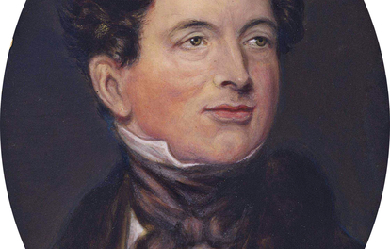
.jpeg)
Thomas Moore (28 May 1779 – 25 February 1852), also known as Tom Moore, was an Irish writer, poet, and lyricist celebrated for his Irish Melodies. His setting of English-language verse to old Irish tunes marked the transition in popular Irish culture from Irish to English. Politically, Moore was recognised in England as a press, or "squib", writer for the aristocratic Whigs; in Ireland he was accounted a Catholic patriot.
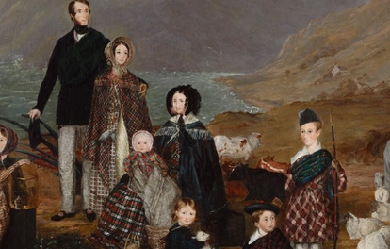
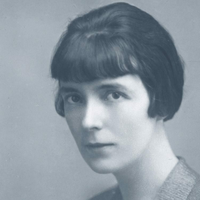
Kathleen Mansfield Murry (14 October 1888– 9 January 1923) was a prominent New Zealand modernist short story writer who was born and brought up in colonial New Zealand and wrote under the pen name of Katherine Mansfield. At 19, Mansfield left New Zealand and settled in the United Kingdom, where she became a friend of modernist writers such as D.H. Lawrence and Virginia Woolf. In 1917 she was diagnosed with extrapulmonary tuberculosis, which led to her death at the age of 34. Biography Early life Mansfield was born Kathleen Mansfield Beauchamp in 1888 into a socially prominent family in Wellington, New Zealand. Her father was a banker and she was a cousin of the author Countess Elizabeth von Arnim. She had two older sisters, a younger sister and a younger brother, born in 1894. Her father, Harold Beauchamp, became the chairman of the Bank of New Zealand and was knighted. Her grandfather was Arthur Beauchamp, who briefly represented the Picton electorate in Parliament. In 1893 the Mansfield family moved from Thorndon to Karori, where Mansfield spent the happiest years of her childhood. She used some of her memories of this time as an inspiration for the “Prelude” story. Her first published stories appeared in the High School Reporter and the Wellington Girls’ High School magazine (the family returned to Wellington proper in 1898), in 1898 and 1899. In 1902 she became enamoured of a cellist, Arnold Trowell, although the feelings were largely unreciprocated. Mansfield herself was an accomplished cellist, having received lessons from Trowell’s father. Mansfield wrote in her journals of feeling alienated in New Zealand, and of how she had become disillusioned because of the repression of the Māori people. Māori characters are often portrayed in a sympathetic or positive light in her later stories, such as “How Pearl Button Was Kidnapped”. In 1903 she moved to London, where she attended Queen’s College along with her sisters. Mansfield recommenced playing the cello, an occupation that she believed she would take up professionally, but she also began contributing to the college newspaper with such dedication that she eventually became its editor. She was particularly interested in the works of the French Symbolists and Oscar Wilde, and she was appreciated among her peers for her vivacious and charismatic approach to life and work. She met fellow writer Ida Baker (also known as Lesley Moore), a South African, at the college, and they became lifelong friends. Mansfield did not become involved in much political activity when she lived in London. For example, she did not actively support the suffragette movement in the UK (women in New Zealand had gained the right to vote in 1893). Mansfield travelled in continental Europe between 1903 and 1906, staying mainly in Belgium and Germany. After finishing her schooling in England, she returned to New Zealand in 1906, and only then began to write short stories. She had several works published in the Native Companion (Australia), her first paid writing work, and by this time she had her heart set on becoming a professional writer. It was also the first occasion on which she used the pseudonym “K. Mansfield”. She rapidly wearied of the provincial New Zealand lifestyle and of her family, and two years later headed again for London. Her father sent her an annual allowance of 100 pounds for the rest of her life. In later years she expressed both admiration and disdain for New Zealand in her journals, but she was never able to return there because of her tuberculosis. Mansfield had two romantic relationships with women that are notable for their pre-eminence in her journal entries. She continued to have male lovers, and attempted to repress her feelings at certain times. Her first same-gender romantic relationship was with Maata Mahupuku (sometimes known as Martha Grace), a wealthy young Māori woman whom she had first met at Miss Swainson’s school in Wellington, and then again in London in 1906. In June 1907 she wrote: “I want Maata—I want her as I have had her—terribly. This is unclean I know but true.” She often referred to Maata as Carlotta. She wrote about Maata in several short stories. Maata married in 1907 but it is claimed that she sent money to Mansfield in London. The second relationship, with Edith Kathleen Bendall, took place from 1906 to 1908. Mansfield also professed her adoration for her in her journals. Return to London Back in London in 1908, Mansfield quickly fell into a bohemian way of life. She published only one story and one poem during her first 15 months there. Mansfield sought out the Trowell family for companionship, and while Arnold was involved with another woman Mansfield embarked on a passionate affair with his brother, Garnet. By early 1909 she had become pregnant by Garnet, though Trowell’s parents disapproved of the relationship and the two broke up. She hastily entered into a marriage with George Bowden, a singing teacher 11 years older than she; they were married on 2 March, but she left him the same evening, before the marriage could be consummated. After a brief reunion with Garnet, Mansfield’s mother, Annie Beauchamp, arrived in 1909. She blamed the breakdown of the marriage to Bowden on a lesbian relationship between Mansfield and Baker, and she quickly had her daughter despatched to the spa town of Bad Wörishofen in Bavaria, Germany. Mansfield miscarried after attempting to lift a suitcase on top of a cupboard. It is not known whether her mother knew of this miscarriage when she left shortly after arriving in Germany, but she cut Mansfield out of her will. Mansfield’s time in Bavaria had a significant effect on her literary outlook. In particular, she was introduced to the works of Anton Chekhov. She returned to London in January 1910. She then published more than a dozen articles in A.R. Orage’s socialist magazine The New Age, and became a friend and lover of Beatrice Hastings, who lived with Orage. Her experiences of Germany formed the foundation of her first published collection, In a German Pension, (1911), which she later described as “immature”. Meeting Murry Soon afterwards Mansfield submitted a lightweight story to a new avant-garde magazine called Rhythm. The piece was rejected by the magazine’s editor, John Middleton Murry, who requested something darker. Mansfield responded with “The Woman at the Store”, a tale of murder and mental illness. Mansfield was inspired at this time by Fauvism. In 1911 Mansfield and Murry began a relationship that culminated in their marriage in 1918, although she left him twice, in 1911 and 1913. In October 1912 the publisher of Rhythm, Charles Granville (sometimes known as Stephen Swift), absconded to Europe and left Murry responsible for the debts the magazine had accumulated. Mansfield pledged her father’s allowance towards the magazine, but it was discontinued, being reorganised as The Blue Review in 1913 and folding after three issues. Mansfield and Murry were persuaded by their friend Gilbert Cannan to rent a cottage next to his windmill in Cholesbury, Buckinghamshire in 1913, in an attempt to alleviate Mansfield’s ill health. In January 1914 the couple moved to Paris, in the hope that a change of setting would make writing easier for both of them. Mansfield wrote only one story during her time there ("Something Childish But Very Natural") before Murry was recalled to London to declare bankruptcy. In 1914 Mansfield had a brief affair with the French writer Francis Carco. Her visit to him in Paris in February 1915 is retold in one of her short stories, “An Indiscreet Journey”. Mansfield’s life and work were changed by the death in 1915 of her beloved younger brother, Leslie Heron “Chummie” Beauchamp, as a New Zealand soldier in France. She began to take refuge in nostalgic reminiscences of their childhood in New Zealand. In a poem describing a dream she had shortly after his death, she wrote By the remembered stream my brother stands Waiting for me with berries in his hands... “These are my body. Sister, take and eat.” At the beginning of 1917 Mansfield and Murry separated, although he continued to visit her at her new apartment. Baker, whom Mansfield often called, with a mixture of affection and disdain, her “wife”, moved in with her shortly afterwards. Mansfield entered into her most prolific period of writing after 1916, which began with several stories, including “Mr Reginald Peacock’s Day” and “A Dill Pickle”, being published in The New Age. Woolf and her husband, Leonard, who had recently set up Hogarth Press, approached her for a story, and Mansfield presented “Prelude”, which she had begun writing in 1915 as “The Aloe”. The story depicts a family of New Zealanders moving house. In December 1917 Mansfield was diagnosed with tuberculosis. Rejecting the idea of staying in a sanatorium on the grounds that it would cut her off from writing, she moved abroad to avoid the English winter. She stayed at a half-deserted and cold hotel in Bandol, France, where she became depressed but continued to produce stories, including "Je ne parle pas français". “Bliss”, the story that lent its name to her second collection of stories in 1920, was also published in 1918. Her health continued to deteriorate and she had her first lung haemorrhage in March. By April Mansfield’s divorce from Bowden had been finalised, and she and Murry married, only to part again two weeks later. They came together again, however, and in March 1919 Murry became editor of Athenaeum, for which Mansfield wrote more than 100 book reviews, collected posthumously as Novels and Novelists. During the winter of 1918–19 she and Baker stayed in a villa in San Remo, Italy. Their relationship came under strain during this period, and after she wrote to Murry to express her feelings of depression he stayed over Christmas. Although her relationship with Murry became increasingly distant after 1918 and the two often lived apart, this intervention of his spurred her on, and she wrote “The Man Without a Temperament”, the story of an ill wife and her long-suffering husband. Mansfield followed her first collection of short stories, Bliss (1920), with another collection The Garden Party, published in 1922. Final years Mansfield spent her last years seeking increasingly unorthodox cures for her tuberculosis. In February 1922 she consulted the Russian physician Ivan Manoukhin, whose “revolutionary” treatment, which consisted of bombarding her spleen with X-rays, caused Mansfield to develop heat flashes and numbness in her legs. In October 1922 Mansfield moved to Georges Gurdjieff’s Institute for the Harmonious Development of Man in Fontainebleau, France, where she was put under the care of Olgivanna Lazovitch Hinzenburg (who later married Frank Lloyd Wright). As a guest rather than a pupil of Gurdjieff, Mansfield was not required to take part in the rigorous routine of the Institute, but she spent much of her time there with her mentor, Alfred Richard Orage and her last letters inform Murry of her attempts to apply some of Gurdjieff’s teachings to her own life. Mansfield suffered a fatal pulmonary haemorrhage in January 1923, after running up a flight of stairs. She died on 9 January and was buried in a cemetery in Avon. Mansfield was a prolific writer in the final years of her life. Much of her work remained unpublished at her death, and Murry took on the task of editing and publishing it in two additional volumes of short stories (The Dove’s Nest in 1923 and Something Childish in 1924), a volume of Poems, The Aloe, Novels and Novelists, and collections of her letters and journals. Legacy The following high schools in New Zealand have a house named after her: Rangitoto College, Westlake Girls’ High School, Macleans College all in Auckland, Tauranga Girls’ College in Tauranga, Wellington Girls’ College in Wellington, Rangiora High School in North Canterbury and Southland Girls’ High School in Invercargill. She has been honoured at Karori Normal School in Wellington which has a stone monument dedicated to her with a plaque commemorating her work and her time at the school. She has also been recognised at Samuel Marsden Collegiate School (previously Fitzherbert Tce School) with a painting and award in her name. There is a Park dedicated to her in Thorndon, Wellington. A street in Menton, France, where she lived and wrote, is named after her and a Fellowship is offered annually to enable a New Zealand writer to work at her former home, the Villa Isola Bella. New Zealand’s pre-eminent short story competition is also named in her honour. She was the subject of the 1973 BBC miniseries A Picture of Katherine Mansfield starring Vanessa Redgrave. The six-part series included adaptations of Mansfield’s life and of her short stories. In 2011, a biopic film titled “Bliss”, was made of her early beginnings as a writer in New Zealand, played by Kate Elliott and featured on the TVNZ TV-movie series “Sunday Theatre” that aired on 28 August 2011.
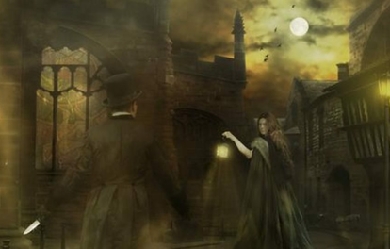

I am an enthusiastic scholar of American, Irish, and English history, Victorian literature, myths, legends, folklore, and Pagan religions. My prose and poetry are generally Gothic in theme and usually set in historical periods. My favourite authors are Edgar Allen Poe, Samuel Clemens, Charles Dickens, Henry James, Sir Arthur Conan Doyle, H.P. Lovecraft, M. R. James, Washington Irving, and Oscar Wilde, just to name a few, and my favourite poets are Keats, Byron, Yeats, Wordsworth, Tennyson, and Longfellow. I have three books of poetry currently on the market, three Gothic novels, one anthology of six horror stories, and several novellas and novelettes. I was raised in Wheatridge, Colorado and attended The University of Colorado at Denver. I currently live in Corvallis, Montana in the great Pacific Northwest.
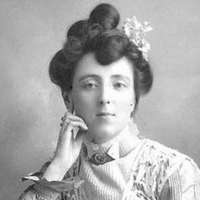
Lucy Maud Montgomery OBE (November 30, 1874– April 24, 1942), publicly known as L. M. Montgomery, was a Canadian author best known for a series of novels beginning in 1908 with Anne of Green Gables. The book was an immediate success. The central character, Anne Shirley, an orphaned girl, made Montgomery famous in her lifetime and gave her an international following. The first novel was followed by a series of sequels with Anne as the central character. Montgomery went on to publish 20 novels as well as 530 short stories, 500 poems, and 30 essays. Most of the novels were set in Prince Edward Island, and locations within Canada’s smallest province became a literary landmark and popular tourist site—namely Green Gables farm, the genesis of Prince Edward Island National Park. She was made an officer of the Order of the British Empire in 1935. Montgomery’s work, diaries and letters have been read and studied by scholars and readers worldwide. Early life Lucy Maud Montgomery was born in Clifton (now New London) in Prince Edward Island on November 30, 1874. Her mother Clara Woolner Macneill Montgomery died of tuberculosis when Maud was 21 months old. Stricken with grief over his wife’s death, Hugh John Montgomery gave custody to Montgomery’s maternal grandparents. Later he moved to Prince Albert, North-West Territories (now Prince Albert, Saskatchewan) when Montgomery was seven. She went to live with her maternal grandparents, Alexander Marquis Macneill and Lucy Woolner Macneill, in the nearby community of Cavendish and was raised by them in a strict and unforgiving manner. Montgomery’s early life in Cavendish was very lonely. Despite having relatives nearby, much of her childhood was spent alone. Montgomery credits this time of her life, in which she created many imaginary friends and worlds to cope with her loneliness, with developing her creativity. Montgomery completed her early education in Cavendish with the exception of one year (1890–1891) during which time she was in Prince Albert with her father and her stepmother, Mary Ann McRae. In November 1890, while in Prince Albert, Montgomery’s first work, a poem entitled “On Cape LeForce,” was published in the Charlottetown paper, The Daily Patriot. She was as excited about this as she was about her return to her beloved Prince Edward Island in 1891. The return to Cavendish was a great relief to her. Her time in Prince Albert was unhappy, for she did not get along with her stepmother and because by, “... Maud’s account, her father’s marriage was not a happy one.” In 1893, following the completion of her grade school education in Cavendish, she attended Prince of Wales College in Charlottetown, and obtained a teacher’s license. She completed the two-year program in one year. In 1895 and 1896, she studied literature at Dalhousie University in Halifax, Nova Scotia. Writing career, romantic interests, and family life Published books and suitors Upon leaving Dalhousie, Montgomery worked as a teacher in various Prince Edward Island schools. Though she did not enjoy teaching, it afforded her time to write. Beginning in 1897, she began to have her short stories published in magazines and newspapers. Montgomery was prolific and had over 100 stories published from 1897 to 1907. During her teaching years, Montgomery had numerous love interests. As a highly fashionable young woman, she enjoyed “slim, good looks” and won the attention of several young men. In 1889, at 14, Montgomery began a relationship with a Cavendish boy named Nate Lockhart. To Montgomery, the relationship was merely a humorous and witty friendship. It ended abruptly when Montgomery refused his marriage proposal. The early 1890s brought unwelcome advances from John A. Mustard and Will Pritchard. Mustard, her teacher, quickly became her suitor; he tried to impress her with his knowledge of religious matters. His best topics of conversation were his thoughts on Predestination and “other dry points of theology”, which held little appeal for Montgomery. During the period when Mustard’s interest became more pronounced, Montgomery found a new interest in Will Pritchard, the brother of her friend Laura Pritchard. This friendship was more amiable but, again, he felt more for Montgomery than she did for him. When Pritchard sought to take their friendship further, Montgomery resisted. Montgomery refused both marriage proposals; the former was too narrow-minded, and the latter was merely a good chum. She ended the period of flirtation when she moved to Prince Edward Island. However, she and Pritchard did continue to correspond for over six years, until Pritchard caught influenza and died in 1897. In 1897, Montgomery accepted the proposal of Edwin Simpson, who was a student in French River near Cavendish. Montgomery wrote that she accepted his proposal out of a desire for “love and protection” and because she felt her prospects were rather low. While teaching in Lower Bedeque, she had a brief but passionate romantic attachment to Herman Leard, a member of the family with which she boarded. In 1898, after much unhappiness and disillusionment, Montgomery broke off her engagement to Simpson. Montgomery no longer sought romantic love. In 1898, Montgomery moved back to Cavendish to live with her widowed grandmother. For a nine-month period between 1901 and 1902, she worked in Halifax as a substitute proofreader for the newspapers Morning Chronicle and The Daily Echo. Montgomery was inspired to write her first books during this time on Prince Edward Island. Until her grandmother’s death in March 1911, Montgomery stayed in Cavendish to take care of her. This coincided with a period of considerable income from her publications. Although she enjoyed this income, she was aware that “marriage was a necessary choice for women in Canada.” Marriage and family In 1908, Montgomery published her first book, Anne of Green Gables. An immediate success, it established Montgomery’s career, and she would write and publish material (Including numerous sequels to Anne) continuously for the rest of her life. Shortly after her grandmother’s death in 1911, she married Ewen (spelled in her notes and letters as “Ewan”) Macdonald (1870–1943), a Presbyterian minister, and they moved to Ontario where he had taken the position of minister of St. Paul’s Presbyterian Church, Leaskdale in present-day Uxbridge Township, also affiliated with the congregation in nearby Zephyr. Montgomery wrote her next eleven books from the Leaskdale manse. The structure was subsequently sold by the congregation and is now the Lucy Maud Montgomery Leaskdale Manse Museum. The Macdonalds had three sons; the second was stillborn. The great increase of Montgomery’s writings in Leaskdale is the result of her need to escape the hardships of real life. Montgomery underwent several periods of depression while trying to cope with the duties of motherhood and church life and with her husband’s attacks of religious melancholia (endogenous major depressive disorder) and deteriorating health: "For a woman who had given the world so much joy, [life] was mostly an unhappy one." For much of her life, writing was her one great solace. Also, during this time, Montgomery was engaged in a series of "acrimonious, expensive, and trying lawsuits with the publisher L.C. Page, that dragged on until she finally won in 1929.” Montgomery stopped writing about Anne in about 1920, writing in her journal that she had tired of the character. She preferred instead to create books about other young, female characters, feeling that her strength was writing about characters who were either very young or very old. Other series written by Montgomery include the “Emily” and “Pat” books, which, while successful, did not reach the same level of public acceptance as the “Anne” volumes. She also wrote a number of stand-alone novels, which were also generally successful, if not as successful as her Anne books. Later life In 1926, the family moved into the Norval Presbyterian Charge, in present-day Halton Hills, Ontario, where today the Lucy Maud Montgomery Memorial Garden can be seen from Highway 7. In 1935, upon her husband’s retirement, Montgomery moved to Swansea, Ontario, a suburb of Toronto, buying a house which she named Journey’s End, situated on Riverside Drive along the east bank of the Humber River. Montgomery continued to write, and (in addition to writing other material) returned to writing about Anne after a 15-year hiatus, filling in previously unexplored gaps in the chronology she had developed for the character. She published Anne of Windy Poplars in 1936 and Anne of Ingleside in 1939. Jane of Lantern Hill, a non-Anne novel, was also composed around this time and published in 1937. In the last year of her life, Montgomery completed what she intended to be a ninth book featuring Anne, titled The Blythes Are Quoted. It included fifteen short stories (many of which were previously published) that she revised to include Anne and her family as mainly peripheral characters; forty-one poems (most of which were previously published) that she attributed to Anne and to her son Walter, who died as a soldier in the Great War; and vignettes featuring the Blythe family members discussing the poems. The book was delivered to Montgomery’s publisher on the day of her death, but for reasons unexplained, the publisher declined to issue the book at the time. Montgomery scholar Benjamin Lefebvre speculates that the book’s dark tone and anti-war message (Anne speaks very bitterly of WWI in one passage) may have made the volume unsuitable to publish in the midst of the second world war. An abridged version of this book, which shortened and reorganized the stories and omitted all the vignettes and all but one of the poems, was published as a collection of short stories called The Road to Yesterday in 1974, more than 30 years after the original work had been submitted. A complete edition of The Blythes Are Quoted, edited by Benjamin Lefebvre, was finally published in its entirety by Viking Canada in October 2009, more than 67 years after it was composed. Death Montgomery died on April 24, 1942. A note was found beside her bed, reading, in part, “I have lost my mind by spells and I do not dare think what I may do in those spells. May God forgive me and I hope everyone else will forgive me even if they cannot understand. My position is too awful to endure and nobody realizes it. What an end to a life in which I tried always to do my best.” Montgomery died from coronary thrombosis in Toronto. However, it was revealed by her granddaughter, Kate Macdonald Butler, in September 2008 that Montgomery suffered from depression– possibly as a result of caring for her mentally ill husband for decades– and may have taken her own life via a drug overdose. But, there is another point of view. According to Mary Rubio, who wrote a biography of Montgomery, Lucy Maud Montgomery: The Gift of Wings (2008), the message may have been intended to be a journal entry as part of a journal that can no longer be found, rather than a simple suicide note. During her lifetime, Montgomery published 20 novels, over 500 short stories, an autobiography, and a book of poetry. Aware of her fame, by 1920 Montgomery began editing and recopying her journals, presenting her life as she wanted it remembered. In doing so certain episodes were changed or omitted. She was buried at the Cavendish Community Cemetery in Cavendish following her wake in the Green Gables farmhouse and funeral in the local Presbyterian church. Legacy Collections The L. M. Montgomery Institute, founded in 1993, at the University of Prince Edward Island, promotes scholarly inquiry into the life, works, culture, and influence of L. M. Montgomery and coordinates most of the research and conferences surrounding her work. The Montgomery Institute collection consists of novels, manuscripts, texts, letters, photographs, sound recordings and artifacts and other Montgomery ephemera. Her major collections are archived at the University of Guelph. The first biography of Montgomery was The Wheel of Things: A Biography of L. M. Montgomery (1975), written by Mollie Gillen. Dr. Gillen also discovered over 40 of Montgomery’s letters to her pen-friend George Boyd MacMillan in Scotland and used them as the basis for her work. Beginning in the 1980s, her complete journals, edited by Mary Rubio and Elizabeth Waterston, were published by the Oxford University Press. From 1988–95, editor Rea Wilmshurst collected and published numerous short stories by Montgomery. Most of her essays, along with interviews with Montgomery, commentary on her work, and coverage of her death and funeral, appear in Benjamin Lefebvre’s The L. M. Montgomery Reader, Volume 1: A Life in Print (2013). Despite the fact that Montgomery published over twenty books, “she never felt she achieved her one 'great’ book”. Her readership, however, has always found her characters and stories to be among the best in fiction. Mark Twain said Montgomery’s Anne was “the dearest and most moving and delightful child since the immortal Alice". Montgomery was honoured by being the first female in Canada to be named a fellow of the Royal Society of Arts in England and by being invested in the Order of the British Empire in 1935. However, her fame was not limited to Canadian audiences. Anne of Green Gables became a success worldwide. For example, every year, thousands of Japanese tourists “make a pilgrimage to a green-gabled Victorian farmhouse in the town of Cavendish on Prince Edward Island”. In 2012, the original novel Anne of Green Gables was ranked number nine among all-time best children’s novels in a survey published by School Library Journal, a monthly with primarily U.S. audience. The British public ranked it number 41 among all novels in The Big Read, a 2003 BBC survey to determine the “nation’s best-loved novel”. Landmarked places Montgomery’s home of Leaskdale Manse in Ontario, and the area surrounding Green Gables and her Cavendish home in Prince Edward Island, have both been designated National Historic Sites. Montgomery herself was designated a Person of National Historic Significance by the Government of Canada in 1943. Bala’s Museum in Bala, Ontario, is a house museum established in 1992. Officially it is “Bala’s Museum with Memories of Lucy Maud Montgomery”, for Montgomery and her family stayed in the boarding house during a July 1922 holiday that inspired her novel The Blue Castle (1926). The museum hosts some events pertaining to Montgomery or her fiction, including re-enactment of the holiday visit. Honours and awards Montgomery was honoured by Britain’s King George V as an Officer of the Order of the British Empire (OBE), as there were no Canadian orders, decorations or medals for civilians until the 1970s. Montgomery was named a National Historic Person in 1943 by the Canadian federal government. Her Ontario residence was designated a National Historic Site (NHS) in 1997 (Leaskdale Manse NHS), while the place that inspired her famous novels, Green Gables, was designated “L. M. Montgomery’s Cavendish NHS” in 2004. On May 15, 1975, the Post Office Department issued a stamp to “Lucy Maud Montgomery, Anne of Green Gables” designed by Peter Swan and typographed by Bernard N. J. Reilander. The 8¢ stamps are perforated 13 and were printed by Ashton-Potter Limited. A pair of stamps was issued in 2008 by Canada Post, marking the centennial of the publication of Montgomery’s classic first novel. The City of Toronto named a park for her (Lucy Maud Montgomery Park) and in 1983 placed a historical marker there near the house where she lived from 1935 until her death in 1942. On November 30, 2015 (her 141st birthday), Google honoured Lucy Maud Montgomery with a Google Doodle published in twelve countries.

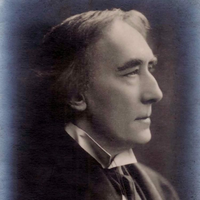
William Topaz McGonagall (March 1825 – 29 September 1902) was a Scottish weaver, doggerel poet and actor. He won notoriety as an extremely bad poet who exhibited no recognition of, or concern for, his peers' opinions of his work. He wrote about 200 poems, including his notorious "The Tay Bridge Disaster" and "The Famous Tay Whale", which are widely regarded as some of the worst in English literature. Groups throughout Scotland engaged him to make recitations from his work and contemporary descriptions of these performances indicate that many listeners were appreciating McGonagall's skill as a comic music hall character. Collections of his verse remain popular, with several volumes available today. McGonagall has been acclaimed as the worst poet in British history. The chief criticisms are that he is deaf to poetic metaphor and unable to scan correctly. McGonagall's fame stems from the humorous effects these shortcomings generate in his work. The inappropriate rhythms, weak vocabulary, and ill-advised imagery combine to make his work amongst the most unintentionally amusing dramatic poetry in the English language. His work is in a long tradition of narrative ballads and verse written and published about great events and tragedies, and widely circulated among the local population as handbills. In an age before radio and television, their voice was one way of communicating important news to an avid public. References Wikipedia—https://en.wikipedia.org/wiki/William_McGonagall

My name is Victoria Rachelle and I'm 15 years old. Poetry is a way to get rid of the pain i feel inside my heart every day. It understands me and does not judge me. I can rely on it to always be there for me when i have no one else. Yes, my poetry may be a little dark but it only shows what and how i honestly feel inside. I have been through a lot of stuff in the past few years and poetry has helped me though it when i didnt think i could get through life anymore. Everyone has their own opinions on life and these are mine. Judge them as you wish but remember that i may not be the only one with that opinion.
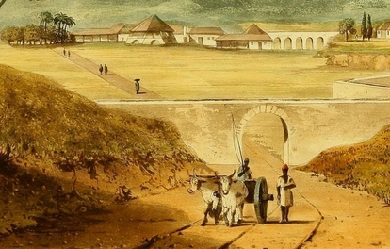
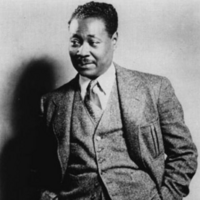
Festus Claudius “Claude” McKay (September 15, 1889– May 22, 1948) was a Jamaican-American writer and poet, who was a seminal figure in the Harlem Renaissance. He wrote four novels: Home to Harlem (1928), a best-seller that won the Harmon Gold Award for Literature, Banjo (1929), Banana Bottom (1933), and in 1941 a manuscript called Amiable With Big Teeth: A Novel of the Love Affair Between the Communists and the Poor Black Sheep of Harlem that has not yet been published. McKay also authored collections of poetry, a collection of short stories, Gingertown (1932), two autobiographical books, A Long Way from Home (1937) and My Green Hills of Jamaica (published posthumously), and a non-fiction, socio-historical treatise entitled Harlem: Negro Metropolis (1940). His 1922 poetry collection, Harlem Shadows, was among the first books published during the Harlem Renaissance. His Selected Poems was published posthumously, in 1953.
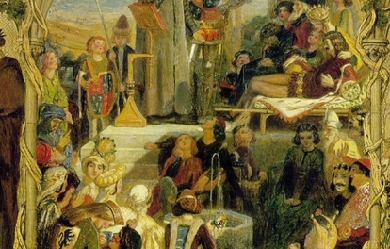
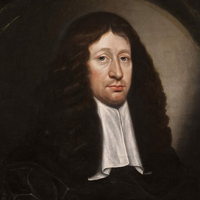
Andrew Marvell (31 March 1621– 16 August 1678) was an English metaphysical poet, satirist and politician who sat in the House of Commons at various times between 1659 and 1678. During the Commonwealth period he was a colleague and friend of John Milton. His poems range from the love-song “To His Coy Mistress”, to evocations of an aristocratic country house and garden in “Upon Appleton House” and “The Garden”, the political address “An Horatian Ode upon Cromwell’s Return from Ireland”, and the later personal and political satires “Flecknoe” and “The Character of Holland”. Early life Marvell was born in Winestead-in-Holderness, East Riding of Yorkshire, near the city of Kingston upon Hull, the son of a Church of England clergyman also named Andrew Marvell. The family moved to Hull when his father was appointed Lecturer at Holy Trinity Church there, and Marvell was educated at Hull Grammar School. A secondary school in the city, the Andrew Marvell Business and Enterprise College, is now named after him. At the age of 13, Marvell attended Trinity College, Cambridge and eventually received a BA degree. A portrait of Marvell attributed to Godfrey Kneller hangs in Trinity College’s collection. Afterwards, from the middle of 1642 onwards, Marvell probably travelled in continental Europe. He may well have served as a tutor for an aristocrat on the Grand Tour, but the facts are not clear on this point. While England was embroiled in the civil war, Marvell seems to have remained on the continent until 1647. It is not known exactly where his travels took him, except that he was in Rome in 1645 and Milton later reported that Marvell had mastered four languages, including French, Italian and Spanish. First poems and Marvell’s time at Nun Appleton Marvell’s first poems, which were written in Latin and Greek and published when he was still at Cambridge, lamented a visitation of the plague and celebrated the birth of a child to King Charles I and Queen Henrietta Maria. He only belatedly became sympathetic to the successive regimes during the Interregnum after Charles I’s execution on 30 January 1649. His “Horatian Ode”, a political poem dated to early 1650, responds with lament to the regicide even as it praises Oliver Cromwell’s return from Ireland. Circa 1650–52, Marvell served as tutor to the daughter of the Lord General Thomas Fairfax, who had recently relinquished command of the Parliamentary army to Cromwell. He lived during that time at Nun Appleton Hall, near York, where he continued to write poetry. One poem, “Upon Appleton House, To My Lord Fairfax”, uses a description of the estate as a way of exploring Fairfax’s and Marvell’s own situation in a time of war and political change. Probably the best-known poem he wrote at this time is “To His Coy Mistress”. Anglo-Dutch War and employment as Latin secretary During the period of increasing tensions leading up to the First Anglo-Dutch War of 1653, Marvell wrote the satirical “Character of Holland,” repeating the then current stereotype of the Dutch as “drunken and profane”: "This indigested vomit of the Sea,/ Fell to the Dutch by Just Propriety.” He became a tutor to Cromwell’s ward, William Dutton, in 1653, and moved to live with his pupil at the house of John Oxenbridge in Eton. Oxenbridge had made two trips to Bermuda, and it is thought that this inspired Marvell to write his poem Bermudas. He also wrote several poems in praise of Cromwell, who was by this time Lord Protector of England. In 1656 Marvell and Dutton travelled to France, to visit the Protestant Academy of Saumur. In 1657, Marvell joined Milton, who by that time had lost his sight, in service as Latin secretary to Cromwell’s Council of State at a salary of £200 a year, which represented financial security at that time. Oliver Cromwell died in 1658. He was succeeded as Lord Protector by his son Richard. In 1659 Marvell was elected Member of Parliament for Kingston-upon-Hull in the Third Protectorate Parliament. He was paid a rate of 6 shillings, 8 pence per day during sittings of parliament, a financial support derived from the contributions of his constituency. He was re-elected MP for Hull in 1660 for the Convention Parliament. After the Restoration The monarchy was restored to Charles II in 1660. Marvell avoided punishment for his own co-operation with republicanism, and he helped convince the government of Charles II not to execute John Milton for his antimonarchical writings and revolutionary activities. The closeness of the relationship between the two former colleagues is indicated by the fact that Marvell contributed an eloquent prefatory poem, entitled “On Mr. Milton’s Paradise Lost”, to the second edition of Milton’s epic Paradise Lost. According to a biographer: “Skilled in the arts of self-preservation, he was not a toady.” In 1661 Marvell was re-elected MP for Hull in the Cavalier Parliament. He eventually came to write several long and bitterly satirical verses against the corruption of the court. Although circulated in manuscript form, some finding anonymous publication in print, they were too politically sensitive and thus dangerous to be published under his name until well after his death. Marvell took up opposition to the 'court party’, and satirised them anonymously. In his longest verse satire, Last Instructions to a Painter, written in 1667, Marvell responded to the political corruption that had contributed to English failures during the Second Anglo-Dutch War. The poem did not find print publication until after the Revolution of 1688–9. The poem instructs an imaginary painter how to picture the state without a proper navy to defend them, led by men without intelligence or courage, a corrupt and dissolute court, and dishonest officials. Of another such satire, Samuel Pepys, himself a government official, commented in his diary, “Here I met with a fourth Advice to a Painter upon the coming in of the Dutch and the End of the War, that made my heart ake to read, it being too sharp and so true.” From 1659 until his death in 1678, Marvell was serving as London agent for the Hull Trinity House, a shipmasters’ guild. He went on two missions to the continent, one to the Dutch Republic and the other encompassing Russia, Sweden, and Denmark. He spent some time living in a cottage on Highgate Hill in north London, where his time in the area is recorded by a bronze plaque that bears the following inscription: Four feet below this spot is the stone step, formerly the entrance to the cottage in which lived Andrew Marvell, poet, wit, and satirist; colleague with John Milton in the foreign or Latin secretaryship during the Commonwealth; and for about twenty years M.P. for Hull. Born at Winestead, Yorkshire, 31st March, 1621, died in London, 18th August, 1678, and buried in the church of St. Giles-in-the-Fields. This memorial is placed here by the London County Council, December, 1898. A floral sundial in the nearby Lauderdale House bears an inscription quoting lines from of his poem “The Garden”. He died suddenly in 1678, while in attendance at a popular meeting of his old constituents at Hull. His health had previously been remarkably good; and it was supposed by many that he was poisoned by some of his political or clerical enemies. Marvell was buried in the church of St Giles in the Fields in central London. His monument, erected by his grateful constituency, bears the following inscription: Near this place lyeth the body of Andrew Marvell, Esq., a man so endowed by Nature, so improved by Education, Study, and Travel, so consummated by Experience, that, joining the peculiar graces of Wit and Learning, with a singular penetration and strength of judgment; and exercising all these in the whole course of his life, with an unutterable steadiness in the ways of Virtue, he became the ornament and example of his age, beloved by good men, feared by bad, admired by all, though imitated by few; and scarce paralleled by any. But a Tombstone can neither contain his character, nor is Marble necessary to transmit it to posterity; it is engraved in the minds of this generation, and will be always legible in his inimitable writings, nevertheless. He having served twenty years successfully in Parliament, and that with such Wisdom, Dexterity, and Courage, as becomes a true Patriot, the town of Kingston-upon-Hull, from whence he was deputed to that Assembly, lamenting in his death the public loss, have erected this Monument of their Grief and their Gratitude, 1688. It may be noted that his epitaph pays more tribute to his political career than his poetry. Prose works Marvell also wrote anonymous prose satires criticizing the monarchy and Catholicism, defending Puritan dissenters, and denouncing censorship. The Rehearsal Transpros’d, an attack on Samuel Parker, was published in two parts in 1672 and 1673. In 1676, Mr. Smirke; or The Divine in Mode, a work critical of intolerance within the Church of England, was published together with a “Short Historical Essay, concerning General Councils, Creeds, and Impositions, in matters of Religion.” Marvell’s pamphlet An Account of the Growth of Popery and Arbitrary Government in England, published in late 1677, alleged that: “There has now for diverse Years, a design been carried on, to change the Lawfull Government of England into an Absolute Tyranny, and to convert the established Protestant Religion into down-right Popery”. John Kenyon described it as “one of the most influential pamphlets of the decade” and G. M. Trevelyan called it: “A fine pamphlet, which throws light on causes provocative of the formation of the Whig party”. A 1678 work published anonymously ("by a Protestant") in defense of John Howe against the attack of his fellow-dissenter, the severe Calvinist Thomas Danson, is also probably by Marvell. Its full title is Remarks upon a late disingenuous discourse, writ by one T.D. under the pretence de causa Dei, and of answering Mr. John Howe’s letter and postscript of God’s prescience, &c., affirming, as the Protestant docrine, that GOd doth by efficacious influence universally move and determine men to all their actions, even to those that are most wicked. Views Although Marvell became a Parliamentarian, he was not a Puritan. He had flirted briefly with Catholicism as a youth, and was described in his thirties (on the Saumur visit) as “a notable English Italo-Machiavellian”. During his lifetime, his prose satires were much better known than his verse. Vincent Palmieri noted that Marvell is sometimes known as the “British Aristides” for his incorruptible integrity in life and poverty at death. Many of his poems were not published until 1681, three years after his death, from a collection owned by Mary Palmer, his housekeeper. After Marvell’s death she laid dubious claim to having been his wife, from the time of a secret marriage in 1667. Marvell’s poetic style T. S. Eliot wrote of Marvell’s style that 'It is more than a technical accomplishment, or the vocabulary and syntax of an epoch; it is, what we have designated tentatively as wit, a tough reasonableness beneath the slight lyric grace’. He also identified Marvell and the metaphysical school with the 'dissociation of sensibility’ that occurred in 17th-century English literature; Eliot described this trend as 'something which... happened to the mind of England... it is the difference between the intellectual poet and the reflective poet’. Poets increasingly developed a self-conscious relationship to tradition, which took the form of a new emphasis on craftsmanship of expression and an idiosyncratic freedom in allusions to Classical and Biblical sources. Marvell’s most celebrated lyric, “To His Coy Mistress”, combines an old poetic conceit (the persuasion of the speaker’s lover by means of a carpe diem philosophy) with Marvell’s typically vibrant imagery and easy command of rhyming couplets. Other works incorporate topical satire and religious themes. References Wikipedia—https://en.wikipedia.org/wiki/Andrew_Marvell
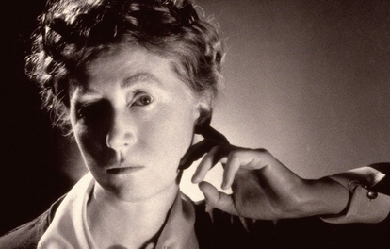
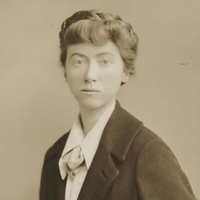
Born near St. Louis, Missouri, on November 15, 1887, Marianne Moore was raised in the home of her grandfather, a Presbyterian pastor. After her grandfather's death, in 1894, Moore and her family stayed with other relatives, and in 1896 they moved to Carlisle, Pennsylvania. She attended Bryn Mawr College and received her B.A. in 1909. Following graduation, Moore studied typing at Carlisle Commercial College, and from 1911 to 1915 she was employed as a school teacher at the Carlisle Indian School. In 1918, Moore and her mother moved to New York City, and in 1921, she became an assistant at the New York Public Library. She began to meet other poets, such as William Carlos Williams and Wallace Stevens, and to contribute to the Dial, a prestigious literary magazine. She served as acting editor of the Dial from 1925 to 1929. Along with the work of such other members of the Imagist movement as Ezra Pound, Williams, and H. D., Moore's poems were published in the Egoist, an English magazine, beginning in 1915. In 1921, H.D. published Moore's first book, Poems, without her knowledge. Moore was widely recognized for her work; among her many honors were the Bollingen prize, the National Book Award, and the Pulitzer Prize. She wrote with the freedom characteristic of the other modernist poets, often incorporating quotes from other sources into the text, yet her use of language was always extraordinarily condensed and precise, capable of suggesting a variety of ideas and associations within a single, compact image. In his 1925 essay "Marianne Moore," William Carlos Williams wrote about Moore's signature mode, the vastness of the particular: "So that in looking at some apparently small object, one feels the swirl of great events." She was particularly fond of animals, and much of her imagery is drawn from the natural world. She was also a great fan of professional baseball and an admirer of Muhammed Ali, for whom she wrote the liner notes to his record, I Am the Greatest! Deeply attached to her mother, she lived with her until Mrs. Moore's death in 1947. Marianne Moore died in New York City in 1972. Poetry Collected Poems (1951) Like a Bulwark (1956) Nevertheless (1944) O to Be a Dragon (1959) Observations (1924) Poems (1921) Selected Poems (1935) Tell Me, Tell Me (1966) The Arctic Fox (1964) The Complete Poems of Marianne Moore (1967) The Pangolin and Other Verse (1936) What Are Years? (1941) Prose A Marianne Moore Reader (1961) Predilections (1955) The Complete Prose of Marianne Moore (1987)


BIO: Concepcion Macuto, She is a contemporary writer from the Philippines, whose writings dwell with "Life and Romance". Graduated with Bachelor of Science of Business Adminastration ( BSBA) major in Management Had locally published her own Book, titled : "Love Is You" Her poems is being published in many book of Anthologies and to some prestigious international magazine. She is a sunshine mixing with rain and creating multicolored rainbow. Poetry is the soul of her emotions spoken and unspoken by the ink of her heart.

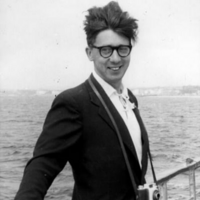
Edwin George Morgan (27 April 1920 – 17 August 2010) was a Scottish poet and translator who was associated with the Scottish Renaissance. He is widely recognised as one of the foremost Scottish poets of the 20th century. In 1999, Morgan was made the first Glasgow Poet Laureate. In 2004 he was named as the first Scottish national poet: The Scots Makar. Morgan was born in Glasgow and grew up in Rutherglen. His parents were Presbyterian. As a child he was not surrounded by books, nor did he have any literary acquaintances. Schoolmates labelled him a swot. He convinced his parents to finance his membership of several book clubs in Glasgow. The Faber Book of Modern Verse (1936) was a “revelation” to him, he later said.


William Meredith was born in New York City on January 9, 1919. He attended the Lenox School in Massachusetts and in 1940 graduated from Princeton University with an A.B. in English, Magna Cum Laude. His senior thesis was on the work of Robert Frost, a major influence for Meredith throughout his career. He worked briefly as a reporter for The New York Times before joining the U.S. Army Air Force in 1941. In 1942 he served as a carrier pilot for the U.S. Navy, achieving the rank of lieutenant. During his service, Meredith's first book of poems, Love Letter from an Impossible Land (1944), was chosen by Archibald MacLeish for the Yale Series of Younger Poets. For the next few years he taught English at Princeton University as Woodrow Wilson Fellow in Writing and Resident Fellow in Creative Writing while still in the U.S. Navy Reserves. Won the Pulitzer Prize for poetry.


James Clerk Maxwell of Glenlair FRS FRSE (13 June 1831 – 5 November 1879) was a Scottish physicist and mathematician. His most prominent achievement was formulating classical electromagnetic theory. This unites all previously unrelated observations, experiments, and equations of electricity, magnetism, and optics into a consistent theory. Maxwell's equations demonstrate that electricity, magnetism and light are all manifestations of the same phenomenon, namely the electromagnetic field. Subsequently, all other classic laws or equations of these disciplines became simplified cases of Maxwell's equations. Maxwell's achievements concerning electromagnetism have been called the “second great unification in physics”, after the first one realised by Isaac Newton.
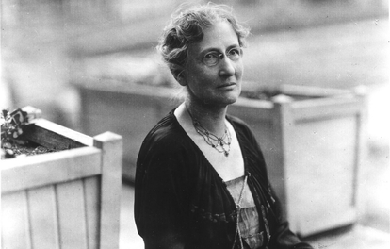
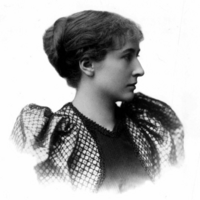
Harriet Monroe (December 23, 1860– September 26, 1936) was an American editor, scholar, literary critic, poet and patron of the arts. She is best known as the founding publisher and long-time editor of Poetry magazine, which made its debut in 1912. As a supporter of the poets Wallace Stevens, Ezra Pound, H. D., T. S. Eliot, William Carlos Williams, Carl Sandburg, Max Michelson and others, she played an important role in the development of modern poetry. Because she was a longtime correspondent of the poets she supported, her letters provide a wealth of information on their thoughts and motives. Monroe was born in Chicago, Illinois. She read at an early age; her father had a large library that provided refuge from domestic discord. In her autobiography, A Poet’s Life: Seventy Years in a Changing World, published two years after her death, Monroe recalls: “I started in early with Shakespeare, Byron, Shelley, with Dickens and Thackeray; and always the book-lined library gave me a friendly assurance of companionship with lively and interesting people, gave me friends of the spirit to ease my loneliness.”
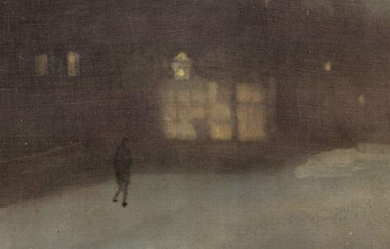
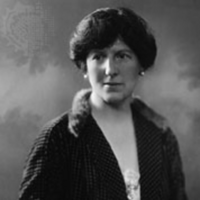
Alice Duer Miller (July 28, 1874– August 22, 1942) was an American writer whose poetry actively influenced political opinion. Her feminist verses impacted on the suffrage issue, while her verse-play The White Cliffs encouraged US entry into World War II. She also wrote novels and screenplays. Biography Alice Duer was born in New York City on July 28, 1874 into a wealthy family. She was the daughter of James Gore King Duer and Elizabeth Wilson Meads, the daughter of Orlando Meads of Albany, New York. Her great grandfather was William Alexander Duer, who was the president of Columbia College, 1829–1842. Her great great grandfather, was William Duer, an American lawyer, developer, and speculator from New York City. He had served in the Continental Congress and the convention that framed the New York Constitution. In 1778, he signed the United States Articles of Confederation. Her great great great grandfather was William Alexander, who claimed the disputed title of Earl of Stirling, and was an American Major-General during the American Revolutionary War. She was also a descendant of Senator Rufus King, who was an American lawyer, politician, and diplomat. He was a delegate for Massachusetts to the Continental Congress. He also attended the Constitutional Convention and was one of the signers of the United States Constitution on September 17, 1787, in Philadelphia, Pennsylvania. He represented New York in the United States Senate, served as Minister to Great Britain, and was the Federalist candidate for both Vice President (1804, 1808) and President of the United States (1816). At the time of her entrance into society, her family lost most of its fortune. She entered Barnard College in 1895 studying mathematics and astronomy. She helped to pay for her studies by selling novels and short essays. She and her sister, Caroline, jointly published a book of poems. Alice graduated in June 1899. On October 5, 1899, she married Henry Wise Miller at Grace Church Chapel in New York City. He was born in 1877, the son of Lt. Commander Jacob Miller, in Nice, France, where his father had been serving with the U.S. Navy. He was an 1892 graduate of Harvard University. They left for Costa Rica, where he attempted to develop rubber cultivation. This venture eventually failed and, in 1903, she, Miller and their young son returned to New York. She became known as a campaigner for women’s suffrage and published a brilliant series of satirical poems in the New York Tribune. These were published subsequently as Are Women People?. These words became a catchphrase of the suffrage movement. She followed this collection with Women Are People! (1917). As a novelist, she scored her first real success with Come Out of the Kitchen in 1916. The story was made into a play and later the 1948 film Spring in Park Lane. She followed it with a series of other short novels, many of which were staged and (increasingly) made into films. At about the same time, her husband began to make money on the Exchange and their money problems were over. Her marriage endured to the end of her life, but was not entirely tranquil. Her novel in verse Forsaking All Others (1933) about a tragic love affair, which many consider her greatest work, reflects this, though it is certainly not autobiographical. In the 1920s and 1930s, many of her stories were used for motion pictures, such as Are Parents People? (1925), Roberta (1935), and Irene (1940), taking her to Hollywood. She also became involved in a number of motion picture screenplays, including Wife vs. Secretary (1936). Her name appears in the very first issue of The New Yorker as an “advisory editor”. In 1940, she wrote the verse novel The White Cliffs, about an American girl who coming to London as a tourist, meets and marries a young upper-class Englishman in the period just before the First World War. The War begins and he goes to the front. He is killed just before the end of the War, leaving her with a young son. Her son is the heir to the family estate. Despite the pull of her own country and the impoverished condition of the estate, she decides to stay and live the traditional life of a member of the English upper class. The story concludes as The Second World War commences and she worries that her son, like his father, will be killed fighting for the country he loves. The poem ends with the lines: ...I am American bred I have seen much to hate here– much to forgive, But in a world in which England is finished and dead, I do not wish to live. The poem was spectacularly successful on both sides of the Atlantic, selling eventually approaching a million copies– an unheard of number for a book of verse. It was broadcast and recorded by British-American actress Lynn Fontanne (with a symphonic accompaniment), and the story was made into the 1944 film The White Cliffs of Dover, starring Irene Dunne. Like her earlier suffrage poems, it had a significant effect on American public opinion and it was one of the influences leading the United States to enter the War. Sir Walter Layton, who held positions in the Ministries of Supply and Munitions during the Second World War, even brought it to the attention of then-Prime Minister Winston Churchill. Death Alice Duer Miller died in 1942, and was interred at Evergreen Cemetery in Morristown, New Jersey.
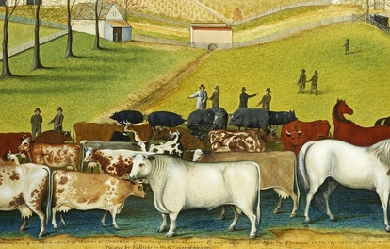
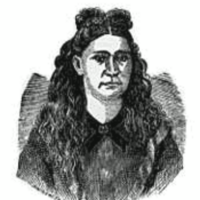
Julia Ann Moore, the “Sweet Singer of Michigan”, born Julia Ann Davis in Plainfield Township, Kent County, Michigan (December 1, 1847–June 5, 1920), was an American poet, or more precisely, poetaster. Like Scotland’s William McGonagall, she is famed chiefly for writing notoriously bad poetry. Biography Young Julia grew up on her family’s Michigan farm, the eldest of four children. When she was ten, her mother became ill, and Julia assumed many of her mother’s responsibilities. Her formal education was thereby limited. In her mid-teens, she started writing poetry and songs, mostly in response to the death of children she knew, but any newspaper account of disaster could inspire her. At age 17, she married Frederick Franklin Moore, a farmer. Julia ran a small store and, over the years, bore ten children, of whom six survived to adulthood. She continued to write poetry and songs. Moore’s first book of verse, The Sentimental Song Book was published in 1876 by C. M. Loomis of Grand Rapids, and quickly went into a second printing. A copy ended up in the hands of James F. Ryder, a Cleveland publisher, who republished it under the title The Sweet Singer of Michigan Salutes the Public. Ryder sent out numerous review copies to newspapers across the country, with a cover letter filled with low key mock praise. And so Moore received national attention. Following Ryder’s lead, contemporary reviews were amusedly negative. The Rochester Democrat wrote of Sweet Singer, that Shakespeare, could he read it, would be glad that he was dead …. If Julia A. Moore would kindly deign to shed some of her poetry on our humble grave, we should be but too glad to go out and shoot ourselves tomorrow. The Hartford Daily Times said that to meet such steady and unremitting demands on the lachrymal ducts one must be provided, as Sam Weller suspected Job Trotter was, ‘with a main, as is allus let on.’… The collection became a curious best-seller, though it is unclear whether this was due to public amusement with Moore’s poetry or genuine appreciation of the admittedly “sentimental” character of her poems. It was, more or less, the last gasp of that school of obituary poetry that had been broadly popular in the U. S. throughout the mid-19th century. Moore gave a reading and singing performance, with orchestral accompaniment, in 1877 at a Grand Rapids opera house. She managed to interpret jeering as criticism of the orchestra. Moore’s second collection, A Few Choice Words to the Public appeared in 1878, but found few buyers. Moore gave a second public performance in late 1878 at the same opera house. By then she had figured out that the praise directed to her was false and the jeering sincere. She began by admitting her poetry was “partly full of mistakes” and that “literary is a work very hard to do”. After the poetry and the laughter and jeering in response was over, Moore ended the show by telling the audience: You have come here and paid twenty-five cents to see a fool; I receive seventy-five dollars, and see a whole houseful of fools. Afterwards, her husband forbade her to publish any more poetry. Three more poems were eventually published, and she would write poems for friends. In 1880, she also published, in newspaper serialization, a short story “Lost and Found”, a strongly moralistic story about a drunkard, and a novella “Sunshine and Shadow”, a peculiar romance set in the American Revolution. The ending of “Sunshine and Shadow” was perhaps intended to be self-referential: the farmer facing foreclosure is gratefully rescued by his wife’s publishing her secret cache of fiction. According to some reports, though, her husband was not grateful, but embarrassed. Shamed or not, he moved the family 100 miles north to Manton in 1882. Moore’s notoriety was known in Manton, but the locals respected her, and did not cooperate with the occasional reporter trying to revisit the past. They were a successful business couple, he with an orchard and sawmill, she with a store. Her husband died in 1914. The next year, Julia republished “Sunshine and Shadow” in pamphlet form. She spent much of her widowhood “melancholy”, sitting on her porch. She died quietly in 1920. The news of her death was widely reported, sometimes with a light touch. On her poetry Some comparison to William McGonagall is worth making. Unlike McGonagall, Moore commanded a fairly wide variety of meters and forms, albeit like Emily Dickinson the majority of her verse is in the ballad meter. Like McGonagall, she held a maidenly bluestocking’s allegiance to the Temperance movement, and frequently indited odes to the joys of sobriety. Most importantly, like McGonagall, she was drawn to themes of accident, disaster, and sudden death; as has been said of A. E. Housman’s A Shropshire Lad, in her pages you can count the dead and wounded. Edgar Wilson Nye called her “worse than a Gatling gun”. Here, she is inspired by the Great Chicago Fire: The great Chicago Fire, friends, Will never be forgot; In the history of Chicago It will remain a darken spot. It was a dreadful horrid sight To see that City in flames; But no human aid could save it, For all skill was tried in vain. Her less morbid side is on display when she hymns Temperance Reform Clubs: Many a man joined the club That never drank a drachm, Those noble men were kind and brave They care not for the slang— The slang they meet on every side: “You’re a reform drunkard, too; You’ve joined the red ribbon brigade, Among the drunkard crew.” Despite her acknowledgment that “Literary is a work very difficult to do,” she did not approve of the life of Byron: The character of “Lord Byron” Was of a low degree, Caused by his reckless conduct, And bad company. He sprung from an ancient house, Noble, but poor, indeed. His career on earth, was marred By his own misdeeds. Influence Mark Twain was a self-described fan of Moore (though not for the reasons Moore would have liked). Twain alluded to her work in Following the Equator, and it is widely assumed that Moore served as a literary model for the character of Emmeline Grangerford in Adventures of Huckleberry Finn. Grangerford’s funereal ode to Stephen Dowling Botts: O no. Then list with tearful eye, Whilst I his fate do tell. His soul did from this cold world fly By falling down a well. They got him out and emptied him; Alas it was too late; His spirit was gone for to sport aloft In the realms of the good and great. (Twain) is not far removed from Moore’s poems on subjects like Little Libbie: One more little spirit to Heaven has flown, To dwell in that mansion above, Where dear little angels, together roam, In God’s everlasting love. (Moore) Moore was also the inspiration for comic poet Ogden Nash, as he acknowledged in his first book, and whose daughter reported that her work convinced Nash to become a “great bad poet” instead of a “bad good poet”. The Oxford Companion to American Literature describes Nash as using Moore’s hyperdithyrambic meters, pseudo-poetic inversions, gangling asymmetrical lines, extremely pat or elaborately inexact rimes, parenthetical dissertations, and unexpected puns. Selections of Moore appeared in D. B. Wyndham-Lewis and Charles Lee’s famous Stuffed Owl anthology, and in other collections of bad poetry. Most of her poetry was reprinted in a 1928 edition, which can be found online. Her complete poetry and prose, with biography, notes, and references, can be found in the Riedlinger edited collection Mortal Refrains. Most poetry collections reprint the latest, “best”, versions of their contents. Riedlinger has adopted the opposite philosophy. Moore has been grouped into the Western Michigan School of Bad Versemakers. Her local contemporaries—including Dr. William Fuller, S.H. Ewell, J.B. Smiley, and Fred Yapple—do not appear to have had relationships with each other, but their proximity and similar penchant for exceptionally laughable verse have led to their posthumous grouping together.
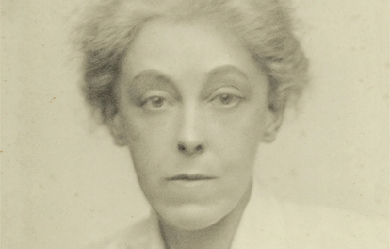
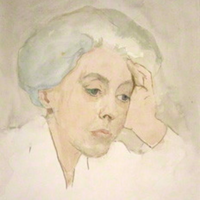
Charlotte Mary Mew (15 November 1869– 24 March 1928) was an English poetess, whose work spans the cusp between Victorian poetry and Modernism. She was born in Bloomsbury, London, the daughter of the architect Frederick Mew, who designed Hampstead town hall, and Anna Kendall.The marriage produced seven children. Charlotte, nicknamed Lotti by her family, attended Gower Street School, where she became infatuated with the school’s headmistress, Lucy Harrison, and lectures at University College London. Her father died in 1898 without making adequate provision for his family; two of her siblings suffered from mental illness, and were committed to institutions, and three others died in early childhood leaving Charlotte, her mother and her sister, Anne. Charlotte and Anne made a pact never to marry for fear of passing on insanity to their children. (One author calls Charlotte “almost certainly chastely lesbian)”. Through most of her adult life, Mew wore masculine attire and kept her hair short, adopting the appearance of a dandy.
#English #Women #XIXCentury #XXCentury

I was born in chicago public housing in the mid 70s. The lack of a male role model drove me in the wrong direction. I've always had a creative mind, I left home at an early age an spent most of my time in the streets. It was there I found my way into music an managed to get a record deal with an independent label. Things didn't go accordingly I ended up dealing drugs which almost cost me my life. Today I'm just a lonely soul trying to find its way.

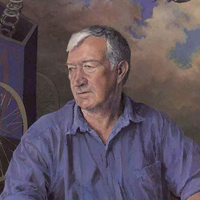
Adrian Mitchell (24 October 1932 – 20 December 2008) was an English poet, novelist and playwright. A former journalist, he became a noted figure on the British Left. For almost half a century he was the foremost poet of the country’s anti-Bomb movement. The critic Kenneth Tynan called him “the British Mayakovsky”. Mitchell sought in his work to counteract the implications of his own assertion that, “Most people ignore most poetry because most poetry ignores most people.”
#English #XIXCentury #XXCentury
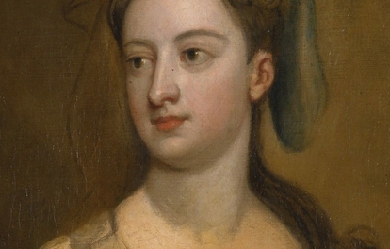
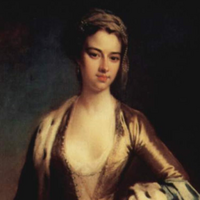
Lady Mary Wortley Montagu (baptized 26 May 1689– 21 August 1762) was an English aristocrat, letter writer and poet. Lady Mary is today chiefly remembered for her letters, particularly her letters from travels to the Ottoman Empire, as wife to the British ambassador to Turkey, which have been described by Billie Melman as “the very first example of a secular work by a woman about the Muslim Orient”. Aside from her writing, Lady Mary is also known for introducing and advocating for smallpox inoculation to Britain after her return from Turkey. Her writings usually address and challenge the hindering contemporary social attitudes towards women and their intellectual and social growth. Early life and education Lady Mary Wortley Montagu, Mary Pierrepont, was born in May 1689; her baptism took place on 26 May, at a few days old, at St. Paul’s Church in Covent Garden. She was the eldest child of Evelyn Pierrepont, 1st Duke of Kingston-upon-Hull, and his first wife, Mary (Fielding) Pierrepont. Her mother had three more children, two girls and a boy, before dying in October 1692. The children were raised by their Pierrepont grandmother until Mary was nine years old. Lady Mary was then passed to the care of her father upon her grandmother’s death. She began her education in her father’s home. Family holdings were extensive, including Thoresby Hall and Holme Pierrepont Hall in Nottinghamshire, and a house in West Dean in Wiltshire. To supplement the instruction of a despised governess, Lady Mary used the library in her father’s mansion, Thoresby Hall in Nottinghamshire, to “steal” her education, teaching herself Latin, a language reserved for men at the time. By 1705, at the age of fourteen or fifteen, Mary Pierrepont had written two albums filled with poetry, a brief epistolary novel, and a prose-and-verse romance modeled after Aphra Behn’s Voyage to the Isle of Love (1684). She also corresponded with two bishops, Thomas Tenison and Gilbert Burnet. Marriage and embassy to Ottoman Empire By 1710 Lady Mary had two possible suitors to choose from: Edward Wortley Montagu and Clotworthy Skeffington. Lady Mary corresponded with Edward Wortley Montagu via letters from 28 March 1710 to 2 May 1711. After May 1711 there was a break in contact between Lady Mary and Edward Wortley Montagu. Mary’s father, now Marquess of Dorchester, rejected Wortley Montagu as a prospect because he refused to entail his estate on a possible heir. Her father pressured her to marry Clotworthy Skeffington, heir to an Irish peerage. In order to avoid marriage to Skeffington, she eloped with Wortley. The marriage license is dated 17 August 1712, the marriage probably took place on 23 August 1712. The early years of Lady Mary Wortley Montagu’s married life were spent in the country. She had a son, Edward Wortley Montagu the younger, on 16 May 1713, in London. A couple of months later, on 1 July 1713 Lady Mary’s brother, aged twenty, died of smallpox and left behind two children. On 13 October 1714, her husband accepted post as Junior Commissioner of Treasury. When Lady Mary joined him in London, her wit and beauty soon made her a prominent figure at court. She was among the society of George I and the Prince of Wales, and counted amongst her friends Molly Skerritt, Lady Walpole, John, Lord Hervey, Mary Astell, Sarah Churchill, Duchess of Marlborough, Alexander Pope, John Gay, and Abbé Antonio Conti. In December 1715, Lady Mary contracted smallpox. She survived, but while she was ill someone circulated the satirical “court eclogues” she had been writing. One of the poems was read as an attack on Caroline, Princess of Wales, in spite of the fact that the “attack” was voiced by a character who was herself heavily satirized. In 1716, Edward Wortley Montagu was appointed Ambassador at Istanbul. In August 1716, Lady Mary accompanied him to Vienna, and thence to Adrianople and Istanbul. He was recalled in 1717, but they remained at Istanbul until 1718. While away from England, the Wortley Montagu’s had a daughter on 19 January 1718, who would grow up to be Mary, Countess of Bute. After an unsuccessful delegation between Austria and Turkey/Ottoman Empire, they set sail for England via the Mediterranean, and reached London on 2 October 1718. The story of this voyage and of her observations of Eastern life is told in Letters from Turkey, a series of lively letters full of graphic descriptions; Letters is often credited as being an inspiration for subsequent female travelers/writers, as well as for much Orientalist art. During her visit she was sincerely charmed by the beauty and hospitality of the Ottoman women she encountered, and she recorded her experiences in a Turkish bath. She also recorded a particularly amusing incident in which a group of Turkish women at a bath in Sofia, horrified by the sight of the stays she was wearing, exclaimed that "the husbands in England were much worse than in the East, for [they] tied up their wives in little boxes, the shape of their bodies". Lady Mary wrote about misconceptions previous travelers, specifically male travelers, had recorded about the religion, traditions and the treatment of women in the Ottoman Empire. Her gender and class status provided her with access to female spaces, that were closed off to males. Her personal interactions with Ottoman women enabled her to provide a more accurate account of Turkish women, their dress, habits, traditions, limitations and liberties. Lady Mary returned to the West with knowledge of the Ottoman practice of inoculation against smallpox, known as variolation. Ottoman smallpox inoculation Lady Mary Wortley Montagu defied convention most memorably by introducing smallpox inoculation to Western medicine after witnessing it during her travels and stay in the Ottoman Empire. In the Ottoman Empire, she visited the women in their segregated zenanas, making friends and learning about Turkish customs. There she witnessed the practice of inoculation against smallpox—variolation—which she called engrafting, and wrote home about it a number of her letters. Variolation used live smallpox virus in the pus taken from a smallpox blister in a mild case of the disease and introduced it into scratched skin of a previously uninfected person to promote immunity to the disease. Lady Mary’s brother had died of smallpox in 1713 and her own famous beauty had been marred by a bout with the disease in 1715. Lady Mary was eager to spare her children, thus, in March 1718 she had her nearly five-year-old son inoculated with the help of Embassy surgeon Charles Maitland. On her return to London, she enthusiastically promoted the procedure, but encountered a great deal of resistance from the medical establishment, because it was an Oriental folk treatment process. In April 1721, when a smallpox epidemic struck England, she had her daughter inoculated by Charles Maitland, the same physician who had inoculated her son at the Embassy in Turkey, and publicized the event. This was the first such operation done in Britain. She persuaded Princess Caroline to test the treatment. In August 1721, seven prisoners at Newgate Prison awaiting execution were offered the chance to undergo variolation instead of execution: they all survived and were released. Controversy over smallpox inoculation intensified, however, Caroline, Princess of Wales was convinced. The Princess’s two daughters were successfully inoculated in April 1722 by French-born surgeon Claudiius Amyand. In response to the general fear of inoculation, Lady Mary, under a pseudonym, wrote and published an article describing and advocating in favor of inoculation in September 1722. In later years, Edward Jenner, who was 13 years old when Lady Mary died, developed the much safer technique of vaccination using cowpox instead of smallpox. As vaccination gained acceptance, variolation gradually fell out of favor. Later years After returning to England, Lady Mary took less interest in court compared to her earlier years. Instead she was more focused on the upbringing of her children, reading, writing and editing her travel letters—which she then chose not to publish. Before starting for the East Lady Mary Wortley Montagu had met Alexander Pope, and during her Embassy travels with her husband, they wrote each other a series of letters. While Pope may have been fascinated by her wit and elegance, Lady Mary’s replies to his letters reveal that she was not equally smitten. Very few letters passed between them after Lady Mary’s return to England, and various reasons have been suggested for the subsequent estrangement. In 1728, Pope attacked Lady Mary in his Dunciad inaugurating a decade in which most of his publications made some sort of allegation against her. Lady Mary went through a series of trials with her children. In 1726 and 1727, Lady Mary’s son ran away from Westminster School several times. He was entrusted to a tutor with strict orders to keep young Edward Montagu abroad. In later years her son managed to return to England without permission and continued to have a strained relationship with both his parents. In August 1736, Lady Mary’s daughter, married John Stuart, 3rd Earl of Bute, despite her parent’s disapproval of the match. The same year Lady Mary met and fell in love with Francesco Algarotti, Count Algarotti, competing with an equally smitten John Hervey for the Count’s affections. Lady Mary wrote many letters to Algarotti in English and in French after his departure from England in September 1736. In July 1739 Lady Mary departed England ostensibly for health reasons declaring her intentions to winter in the south of France. In reality, she left to visit and live with Algarotti in Venice. Their relationship ended in 1741 after Lady Mary and Algarotti were both on diplomatic mission in Turin. Lady Mary stayed abroad and traveled extensively. After traveling to Venice, Florence, Rome, Genoa and Geneva, she finally settled in Avignon in 1742. She left Avignon in 1746 for Brescia, where she fell ill and stayed for nearly a decade, leaving for Lovere in 1754. After August 1756, she resided in Venice and Padua and saw Algarotti again in November. Lady Mary exchanged letters with her daughter, Lady Bute, discussing topics such as philosophy, literature, and the education of girls, as well as conveying details of her geographical and social surroundings. Lady Mary received news of her husband Edward Wortley Montagu’s death in 1761 and left Venice for England. En route to London, she handed her Embassy Letters to the Rev. Benjamin Sowden of Rotterdam, for safe keeping and “to be dispos’d of as he thinks proper”. Lady Mary reached London in January 1762, and died in the year of her return, on 21 August 1762. Important works and literary place Although Lady Mary Wortley Montagu is now best known for her Embassy Letters, she wrote poetry and essays as well. A number of Lady Mary’s poems and essays were printed in her lifetime, either without or with her permission, in newspapers, in miscellanies, and independently. Montagu did not intend to publish her poetry, but it did circulate widely, in manuscript, among members of her own social circle. Lady Mary was highly suspicious of any idealizing literary language. She wrote most often in heroic couplets, a serious poetic form to employ, and, according to Susan Staves,"excelled at “answer poems.”. Some of her widely anthologized poems include “Constantinople” and “Epistle from Mrs. Yonge to her Husband.” “Constantinople,” written January 1718, is a beautiful poem in heroic couplets describing Britain and Turkey through human history, and representing the state of mind “of knaves, coxcombs, the mob, and party zealous—all characteristic of the London of her time.”. “Epistle from Mrs. Yonge to her Husband,” written 1724, stages a letter from Mrs. Yonge to her libertine husband and exposes the social double standard which led to the shaming and distress of Mrs. Yonge after her divorce. In 1737 and 1738, Lady Mary published anonymously a political periodical called the Nonsense of Common-Sense, supporting the Robert Walpole government (the title was a reference to a journal of the liberal opposition entitled Common Sense). She wrote six Town Eclogues. She wrote notable letters describing her travels through Europe and the Ottoman Empire; these appeared after her death in three volumes. Lady Mary corresponded with Anne Wortley and wrote courtship letters to her future husband Edward Wortley Montagu, as well as love letters to Francesco Algarotti. She corresponded with notable writers, intellectuals and aristocrats of her day. She wrote gossip letters and letters berating the vagaries of fashionable people to her sister, Lady Mar, and exchanged intellectual letters with her adult daughter, Lady Bute. Although, not published during her lifetime, her letters from Turkey were clearly intended for print. She revised them extensively and gave a transcript to the Rev. Benjamin Sowden in Rotterdam in 1761. During the twentieth century Lady Mary’s letters were edited separately from her essays, poems and plays. Montagu’s Turkish letters were to prove an inspiration to later generations of European women travelers and writers. In particular, Montagu staked a claim to the authority of women’s writing, due to their ability to access private homes and female-only spaces where men were not permitted. The title of her published letters refers to “Sources that Have Been Inaccessible to Other Travellers”. The letters themselves frequently draw attention to the fact that they present a different (and, Montagu asserts, more accurate) description than that provided by previous (male) travelers: “You will perhaps be surpriz’d at an Account so different from what you have been entertaind with by the common Voyage-writers who are very fond of speaking of what they don’t know.”. Montagu provides an intimate description of the women’s bathhouse in Sofia, in which she derides male descriptions of the bathhouse as a site for unnatural sexual practices, instead insisting that it was “the Women’s coffee house, where all the news of the Town is told, Scandal invented, etc”. However, Montagu’s detailed descriptions of nude Oriental beauties provided inspiration for male artists such as Ingres, who restored the explicitly erotic content that Montagu had denied. In general, Montagu dismisses the quality of European travel literature of the 18th century as nothing more than "trite observations…superficial…[of] boys [who] only remember where they met with the best wine or the prettyest women.". Montagu’s Turkish letters were frequently cited by imperial women travelers, more than a century after her journey. Such writers cited Montagu’s assertion that women travelers could gain an intimate view of Turkish life that was not available to their male counterparts. However, they also added corrections or elaborations to her observations. In 1739 a book was printed by an unknown author under the pseudonym “Sophia, a person of quality”, titled Woman not Inferior to Man. This book is often attributed to Lady Mary. Her Letters and Works were published in 1837. Montagu’s octogenarian granddaughter Lady Louisa Stuart contributed to this, anonymously, an introductory essay called Biographical Anecdotes of Lady M. W. Montagu, from which it was clear that Stuart was troubled by her grandmother’s focus on sexual intrigues and did not see Lady Mary Wortley Montagu’s Account of the Court of George I at his Accession as history. However, Montagu’s historical observations, both in the “Anecdotes” and the “Turkish Embassy Letters,” prove quite accurate when put in context. Despite the availability of her work in print and the revival efforts of Feminist scholars, the complexity and brilliance of Lady Mary Wortley Montagu’s extensive body of work has not yet been recognized to the fullest.
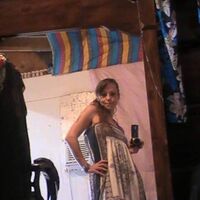
About Me: Please leave a comment on my poetry and stories thank you Blessed Be 37, Mother of 2 gorgeous daughters 13 n 10, Found my high school sweetheart after 15 years and now we celebrated our 1yr anniversary aug-27-13. Ill never let him go no matter what. I Love writing poetry and short stories. Its my way to relieve my over stuffed mind that is always stuck on play. I write because that is the only way I know how to express myself. I'm horrible talking face to face because of my Social Anxiety. I hate it but i have friends and family who love me and help me thru it. My Hobbies: Horseback riding,biking,roller skating, coloring,taking walks,writing poetry and more My Achievements: People in our life are not strangers just friends we haven't met yet :-) Please add me toYOUR favorites and a friend.. as i will be happy to do the same :-) Blessed Be Published In Pocono Record: Eastern Pocono Community News *Your Page: *So High And Free -January-26-2001 *The Day YouBEGIN To Live..June-8-2001 Awards:-------------------------------------------------------- *Poetry.com: & the International Library of Poetry: Awarded Prestigious Editor's Choice Award, >Outstanding Achievement in Poetry: *VIP# P6125073- Rain- 2004 *VIP# P612507- You're- June 2005 *VIP#P1854496- The Day You Begin To Live -December 2000 Awaking To Sunshine (book- Natures of Echoes) *Award of MeritCERTIFICATE : from John Campbell: Editor & Publisher, Eddie-Lou Cole : Poetry Editor, Rank Honorable Mention In Appreciation December-15-1991 World of Poetry: *Winter Is
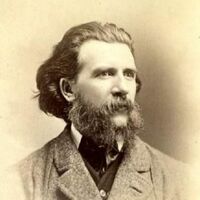
Gerald Massey (29 May 1828 – 29 October 1907) was an English poet and writer on Spiritualism and Ancient Egypt. Early life Massey was born near Tring, Hertfordshire in England to poor parents. When little more than a child, he was made to work hard in a silk factory, which he afterward deserted for the equally laborious occupation of straw plaiting. These early years were rendered gloomy by much distress and deprivation, against which the young man strove with increasing spirit and virility, educating himself in his spare time, and gradually cultivating his innate taste for literary work. He was attracted by the movement known as Christian Socialism, into which he threw himself with whole-hearted vigour, and so became associated with Frederick Denison Maurice and Charles Kingsley. Later life From about 1870 onwards, Massey became increasingly interested in Egyptology and the similarities that exist between ancient Egyptian mythology and the Gospel stories. He studied the extensive Egyptian records housed in the Assyrian and Egyptology section of the British Museum in London where he worked closely with the curator, Dr. Samuel Birch, and other leading Egyptologists of his day, even learning hieroglyphics at the time the Temple of Horus at Edfu was first being excavated. Writing career Massey's first public appearance as a writer was in connection with a journal called the Spirit of Freedom, of which he became editor, and he was only twenty-two when he published his first volume of poems, Voices of Freedom and Lyrics of Love (1850). These he followed in rapid succession with The Ballad of Babe Christabel (1854), War Waits (1855), Havelock's March (1860), and A Tale of Eternity (1869). In 1889, Massey published a two-volume collection of his poems called My Lyrical Life. He also published works dealing with Spiritualism, the study of Shakespeare's sonnets (1872 and 1890), and theological speculation. It is generally understood that he was the original of George Eliot's Felix Holt.[1] Massey's poetry has a certain rough and vigorous element of sincerity and strength which easily accounts for its popularity at the time of its production. He treated the theme of Sir Richard Grenville before Tennyson thought of using it, with much force and vitality. Indeed, Tennyson's own praise of Massey's work is still its best eulogy, for the Laureate found in him a poet of fine lyrical impulse, and of a rich half-Oriental imagination. The inspiration of his poetry is a combination of his vast knowledge based on travels, research and experiences; he was a patriotic humanist to the core. His poem "The Merry, Merry May" was set to music in 1894 by the composer Cyril Rootham and then in a popular song by composer Christabel Baxendale. In regard to Ancient Egypt, Massey first published The Book of the Beginnings, followed by The Natural Genesis. His most prolific work is Ancient Egypt: The Light of the World, published shortly before his death. Massey was a believer in spiritual evolution; he opined that Darwin's theory of evolution was incomplete without spiritualism: The theory contains only one half the explanation of man's origins and needs spiritualism to carry it through and complete it. For while this ascent on the physical side has been progressing through myriads of ages, the Divine descent has also been going on – man being spiritually an incarnation from the Divine as well as a human development from the animal creation. The cause of the development is spiritual. Mr. Darwin's theory does not in the least militate against ours – we think it necessitates it; he simply does not deal with our side of the subject. He can not go lower than the dust of the earth for the matter of life; and for us, the main interest of our origin must lie in the spiritual domain. Assertions about Jesus and Horus One of the more important aspects of Massey's writings were his assertions that there were parallels between Jesus and the Egyptian god Horus, primarily contained in book The Natural Genesis first published in 1883. Massey, for example, argued in the book his belief that: both Horus and Jesus were born of virgins on 25 December, raised men from the dead (Massey speculates that the biblical Lazarus, raised from the dead by Jesus, has a parallel in El-Asar-Us, a title of Osiris), died by crucifixion and were resurrected three days later.[5] These assertions have influenced various later writers such as Alvin Boyd Kuhn, Tom Harpur, Yosef Ben-Jochannan, and Dorothy M. Murdock.[6][7][unreliable source?] Like Godfrey Higgins a half-century earlier, Massey believed that Western religions had mythical roots. The human mind has long suffered an eclipse and been darkened and dwarfed in the shadow of ideas the real meaning of which has been lost to moderns. Myths and allegories whose significance was once unfolded in the Mysteries have been adopted in ignorance and reissued as real truths directly and divinely vouchsafed to humanity for the first and only time! The early religions had their myths interpreted. We have ours misinterpreted. And a great deal of what has been imposed on us as God’s own true and sole revelation to us is a mass of inverted myths. Christian ignorance notwithstanding, the Gnostic Jesus is the Egyptian Horus who was continued by the various sects of gnostics under both the names of Horus and of Jesus. In the gnostic iconography of the Roman Catacombs child-Horus reappears as the mummy-babe who wears the solar disc. The royal Horus is represented in the cloak of royalty, and the phallic emblem found there witnesses to Jesus being Horus of the resurrection. Criticism Christian theologian W. Ward Gasque, a Ph.D. from Harvard and Manchester University, sent emails to twenty Egyptologists that he considered leaders of the field – including Kenneth Kitchen of the University of Liverpool and Ron Leprohan of the University of Toronto – in Canada, the United States, Britain, Australia, Germany and Austria to verify academic support for some of these assertions. His primary targets were Tom Harpur, Alvin Boyd Kuhn and the Christ myth theory, and only indirectly Massey. Ten out of twenty responded, but most were not named. According to Gasque, Massey's work, which draws comparisons between the Judeo-Christian religion and the Egyptian religion, is not considered significant in the field of modern Egyptology and is not mentioned in the Oxford Encyclopedia of Ancient Egypt or similar reference works of modern Egyptology. Gasque reports that those who responded were unanimous in dismissing the proposed etymologies for Jesus and Christ, and one unspecified Egyptologist referred to Alvin Boyd Kuhn's comparison as "fringe nonsense."[11][unreliable source?] However, Harpur's response to Gasque quotes leading contemporary Egyptologist Erik Hornung that there are parallels between Christianity and ancient Egypt, as do the writings of biblical expert Thomas L. Thompson. Theologian Stanley E. Porter has pointed out that Massey's analogies include a number of errors, for example Massey stated that 25 December as the date of birth of Jesus was selected based on the birth of Horus, but the New Testament does not include any reference to the date or season of the birth of Jesus. The earliest known source recognizing 25 December as the date of birth of Jesus is by Hippolytus of Rome, written around the beginning of the 3rd century, based on the assumption that the conception of Jesus took place at the Spring equinox. Hippolytus placed the equinox on 25 March and then added 9 months to get 25 December, thus establishing the date for festivals. The Roman Chronography of 354 then included an early reference to the celebration of a Nativity feast in December, as of the fourth century. Porter states that Massey's serious historical errors often render his works nonsensical, for example Massey states that the biblical references to Herod the Great were based on the myth of "Herrut" the evil hydra serpent, while the existence of Herod the Great can be well established without reliance on Christian sources. References Wikipedia—https://en.wikipedia.org/wiki/Gerald_Massey


